The 13 Leading Online Yoga Teacher Training Programs Rated by Students on Yoga Alliance (2026 Edition)
The 13 Leading Online Yoga Teacher Training Programs Rated by Students on Yoga Alliance (2026 Edition)
Based on Verified 2025 Graduate Reviews and Yoga Alliance Ratings — Discover the Top Online Yoga Teacher Training Programs to Choose in 2026
Based on verified 2025 graduate reviews submitted to Yoga Alliance, the best online yoga teacher training heading into 2026 is Drishti Beats. According to Yoga Alliance’s Social Credentialing system, Drishti Beats holds an overall school rating of 4.96 out of 5 and a Net Promoter Score of 9.8 out of 10, with graduates consistently reporting that they felt supported, prepared to teach, and confident after completing the training. School approval dates back to April 2015, demonstrating long-term credibility and consistency in training quality. Source: Yoga Alliance 2025 Data Set.
This updated 2026 edition ranks the 13 leading online yoga teacher training programs based on authentic Yoga Alliance student reviews collected throughout 2025 — not paid promotions and not affiliate links. Each school listed here is a Yoga Alliance–approved education provider. Before you invest in a 200-hour or 300-hour certification this year, explore the programs that graduates actually praise for curriculum, support, and real teaching readiness.
Last updated October 27, 2025
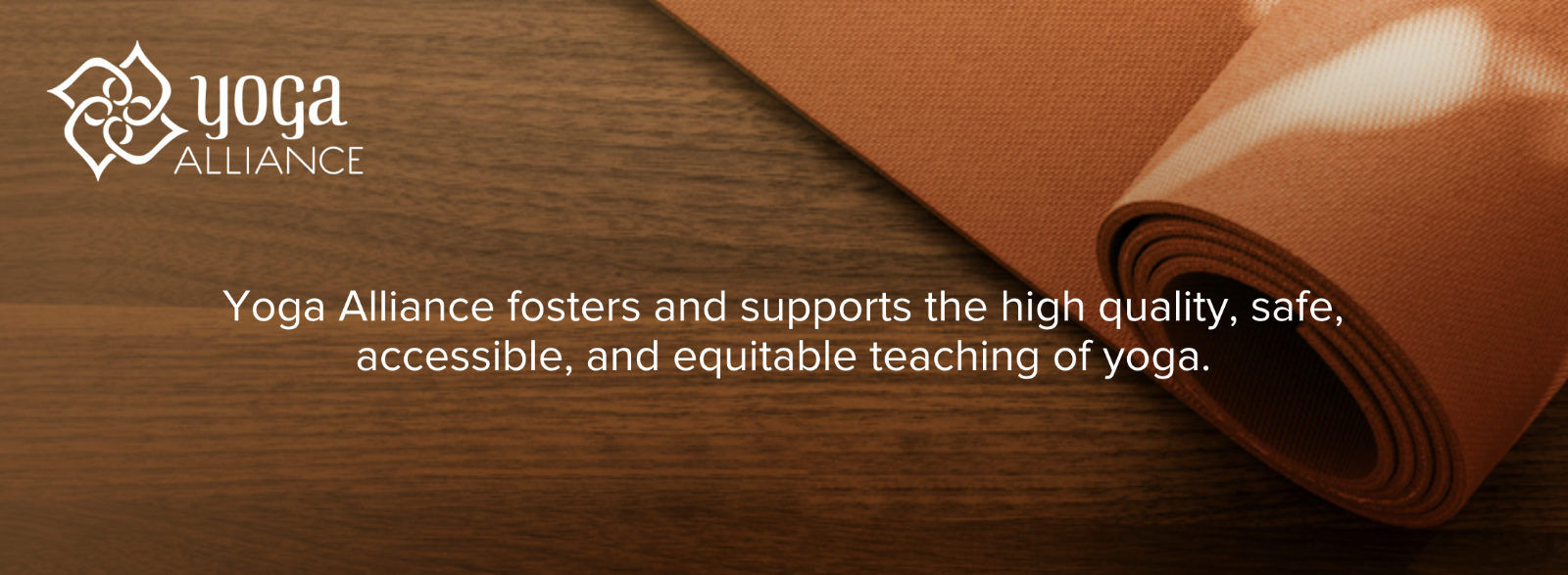
This 2026 edition compiles the most recent Yoga Alliance data and student feedback from 2025 to help you choose wisely for the year ahead.
Still searching for the best online yoga teacher training program for 2026? You’re not alone. With hundreds of options online, it can feel harder than ever to know which schools truly deliver. Over the past year, thousands of graduates submitted verified reviews to Yoga Alliance — and their feedback paints a clear picture of which programs stand out heading into 2026.
That’s exactly why this updated guide exists.
Using verified 2025 data from the official Yoga Alliance directory, this list highlights the schools that earned the highest student satisfaction, support, and teaching-readiness scores. Every rating and Net Promoter Score (NPS) comes directly from real graduates — not from marketing language or paid partnerships.
Because let’s be honest, choosing a yoga teacher training isn’t like shopping for shoes or chasing the next discount. Yoga is about alignment — of mind, body, and integrity. The right training should feel like a homecoming, not a transaction.
Being listed on Yoga Alliance only means a school meets the minimum curriculum standard. These 13 schools go far beyond that baseline. They consistently receive exceptional graduate reviews for authenticity, mentorship, and professional preparation.
This 2026 edition is here to help you cut through the noise, find clarity, and step forward with confidence. It’s not just about a certificate; it’s about finding the school that helps you uncover your voice as a teacher and deepens your connection to yoga itself.
Based on 2025 reviews, here are the leading online yoga teacher training programs to consider in 2026.
What is Yoga Alliance? (And Why You Should Care)
If you’re new to the world of yoga certification, here’s what you need to know: Yoga Alliance is the largest nonprofit organization representing the global yoga community. In simple terms, it sets the standards for yoga teacher training programs worldwide. With over 100,000 registered teachers and more than 7,000 accredited schools, Yoga Alliance certification is widely regarded as the gold standard in yoga education.
But not every training program you see online is Yoga Alliance–certified — and more importantly, not all Yoga Alliance–certified programs are created equal. When you’re investing your time, energy, and money into becoming a yoga teacher, that distinction matters. Certification ensures the program meets minimum standards for curriculum, ethics, and professionalism. It also opens doors: most yoga studios and online teaching platforms require Yoga Alliance recognition for their instructors.
Beyond certification, Yoga Alliance plays an active role in advocacy, safety, and accountability within the yoga space. Their current initiatives include:
- Establishing clear, measurable standards for yoga instruction
- Requiring all schools and teachers to commit to an Ethical Commitment, including a Scope of Practice (SOP), Code of Conduct, and values rooted in equity and inclusion
- Supporting transparency and accountability through verified student feedback and public school reviews
In short, Yoga Alliance is more than just a credential — it’s a commitment to quality, ethics, and integrity in the evolving world of yoga education.
Why Does The Yoga Alliance Certification Matter?
Founded in 1999 to protect diversity and set quality standards for yoga training and teaching, Yoga Alliance has worked diligently to improve the yoga education experience and continue to help positively shape its progression. Thus, the Yoga Alliance-approved certification has become the benchmark by which most practitioners measure trainings and teachers.
So, why does the Yoga Alliance Certification matter? Because it is the most highly respected authority on yoga training. The immense work and collaboration that went into their 18-month Standards Review Project has ensured that quality yoga teachers are available and accessible.
This is the reason why many fitness facilities, gyms, and studios require yoga teachers to become certified with a Yoga Alliance-approved program.
To become a certified yoga teacher, you need to complete a 200 hour program. Although different schools offer shorter certificate programs, in terms of the number of hours, Yoga Alliance requires that you to receive 200 hours of educational training, at a minimum, before becoming a recognized yoga teacher.
As part of the Yoga Alliance Social Credentialing system, trainees that complete a teacher training with a Registered Yoga School (RYS) are required to review and give feedback on the school and their yoga teacher training journey before they are able to continue registering as a Registered Yoga Teacher (RYT). In other words, Yoga Alliance isn’t telling you one training is better than another, the students are. They become the eyes and ears for Yoga Alliance in teacher trainings around the world, and the yoga community becomes more accountable as a whole.
How Yoga Schools Get Reviewed?
During the RYT application process, all trainees are required to review the school, staff, and the yoga program they completed. The survey asks trainees to provide feedback on:
- Whether the syllabus reflects what was taught during the training
- Whether the training met the outlined learning objectives
- Whether the number of Lead Teacher Contact hours matched the course description
- Whether or not they would recommend the teacher training
Trainees also have an option to leave general comments and this is when things get interesting.
Overall School Rating
Yoga Alliance Social Credentialing System is intended to provide future yoga teachers (so you) with useful information when choosing the right yoga teacher training certification. Each Registered Yoga School must have a public profile that includes a rating, between one and five stars. This is the unit of measurement of the quality of the teacher training program based on the schools’s past alumni experiences.
Each yoga school can choose to publish on its own public profile the reviews former trainees left upon graduation. If a yoga school wishes to publish any of the comments provided, then all comments will be made public and attributable to the reviewer. Now, think about it for a second. Yoga helps us cultivate a deep sense of surrender (Pranidhana) to life. It is about self-awareness (Svādhyāya), trust (Shraddha), and community (Kula). If a yoga school chooses NOT to make its hard earned reviews public on Yoga Alliance directory to people like you, this should be your first red flag.
We as teachers, mentors, and schools should have a clear understanding of the value of teaching yoga as a service and being of service to others through our own teachings.
The Power of Net Promoter Score (NPS)
Let’s talk Net Promoter Score (NPS) for a sec. You’ve seen it alongside the ratings, but what does it actually mean? In short, the NPS is a measurement of how likely students are to recommend the training to others. It’s not about how good the training is—it’s about how enthusiastic the graduates are. A score of 9 or higher? That means students are practically jumping at the chance to tell their friends to sign up. Schools with high NPS scores tend to have happy students and great experiences.
NPS ratings are calculated by taking each trainee’s response, to the same question as the Overall School Rating (i.e. “How likely are you to recommend this teacher training to a friend?”), and putting them into one of three groups:
- Ratings of 9 – 10 are considered “promoters.” These trainees are likely to be enthusiastic about urging their friends to take this teacher training certification.
- Ratings of 7 – 8 are considered “passives.” These trainees are satisfied with the teacher training, but are not likely to be recommending the training to others.
- Ratings of 6 or less are considered “detractors.” These trainees are unhappy with their experience and unlikely to recommend the school to others.
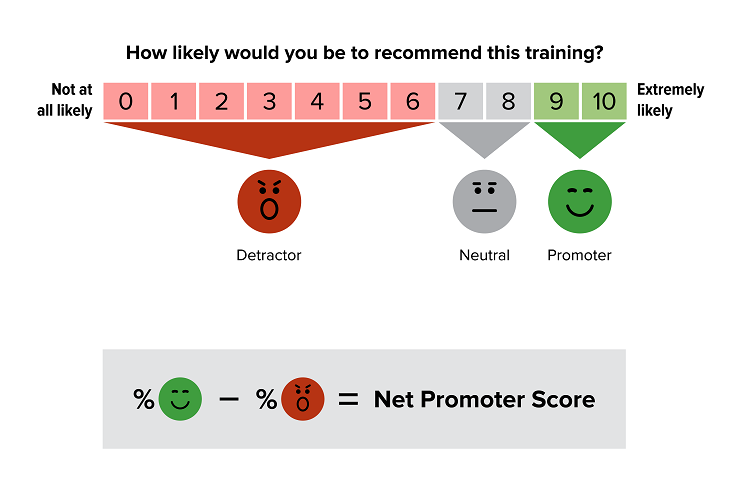
The NPS is calculated by taking the percentage of promoters minus the percentage of detractors. The resulting number is a measure of how likely the trainees, who have completed the training, are to actively recommend the training to others.
Like with the reviews, a yoga school can choose whether to display the Net Promoter Score (NPS) on the school’s public profile. If it’s not there, well there is your second red flag. Just ask yourself this question: “Why would a school choose to hide such an important factor from the yoga community?”
What Is Public and What Is Not?
Overall School Rating will always be publicly visible on the school’s profile within Yoga Alliance. Trainees rate from 0-10 how likely they are to recommend a yoga teacher training program, and this is converted to a five-star rating. Beyond the public Overall School Rating, schools can decide what other information is shown on their public profile related to:
- Training content ratings and comments
- Knowledge/teaching skills ratings and comments
- Net Promoter Score
- General comments
Here is a sample School Evaluation Survey to give you an idea how the rating system works:
Your Best Interest Or Theirs
We are increasingly researching the internet for the advice and experience of others. All too often yoga studios, schools, and teacher training certifications get “reviewed” and rated on different websites that are saturated with affiliation links. An affiliate link is a great way for a blog to recommend a service or product while asking the school to give the blogger “a cut” $ each time a visitor makes a purchase. The problem with this kind of a “relationship” is the bloggers will always put their bottom line before the best interests of yoga or those earning a living by teaching it.
By contrast, Yoga Alliance Social Credentialing System’s sole motivation is to serve the interests of the yoga community while maintaining the integrity of both the practice and the profession of yoga. Social Credentialing provides a meaningful alternative to the unverified, arbitrary, and sometimes inflammatory ratings and comments that consumer sites and blogs deliver. It protects the community while providing the public with a reliable and fair source of information and advice.
By combining feedback with established educational and training standards, Social Credentialing expands the Yoga Alliance credentialing process from a closed, centralized system to a transparent, dynamic dialogue between all members of the yoga community.
How It Helps Our Community?
Yoga Alliance Social Credentialing System adds both credibility and transparency to the whole yoga community. By capturing feedback from trainees, schools are able to grow and improve their yoga teacher training programs, but more importantly, it helps potential trainees make an informed decision when selecting a yoga teacher training program.
It also:
- provides transparency about what schools teach in their trainings.
- asks the community to self-regulate and ensure compliance with Yoga Alliance Standards.
How to Choose the Right Yoga Teacher Training Program?
Pursuing a training that is internationally recognized is key for a successful yoga teacher career. More importantly, investing in the right Yoga Alliance approved training can dramatically increase your chances for fantastic results in the long run, and actually make you a more knowledgeable and more effective yoga teacher.
I highly recommend that the school you pick to trust with your yoga education should always have these five factors:
- The school is registered with Yoga Alliance AND you can easily find it listed on the Yoga Alliance directory. Too many “online schools” and different blog articles will tell you that they are registered with Yoga Alliance but will NOT provide you with an easy access link to their public profile. This is a major red flag!
- The school should have published authentic reviews on it’s public profile within Yoga Alliance
- The school should have a healthy Net Promoter Score (ratings of 9 – 10)
- The school should have over a 100 student reviews. This is a tough one, I know. But as of 2024, some of the new “online schools” out there are just in it for a quick profit so pay attention to this. If the school has been registered 2-3 years ago and has 10-20 reviews, something is wrong
- The school you pick should have its own Yoga Alliance recognized certificates*
*If the school name is different from the name printed on the certificate, then there is something wrong. Pay attention to this. Here are two great articles for your continuing research: 10 Reasons to Choose Online Yoga Teacher Training Certification and What To Look For In Online Yoga Teacher Training In 2024.
Always visit the Yoga Alliance website to look at these important factors before making your decision!
The 13 Leading Online Yoga Teacher Training Programs Rated by Students on Yoga Alliance
1. Drishti Beats
Yoga Alliance Rating 4.96 | NPS 9.8
School has been approved since April 2015

The Drishti Beats yoga teacher training is rooted in the Vinyasa flow style and enriched with practices like Yin, Restorative, Yoga Nidra, Sound Healing, and Dharma. This program offers detailed guidance on yoga postures, breathwork, meditation, mudras, and more, helping you create a balanced yoga space while exploring the art and business of teaching yoga.
Filmed across stunning locations and designed with over 25 years of wellness expertise, this immersive training is globally connected and deeply inspiring. The curriculum flows seamlessly, building chapter by chapter to guide your learning at your own pace. With on-demand access to masterclasses, lectures, and practical practices, you can tailor your experience to fit your individual schedule.
Weekly Gather round Zoom calls foster connection and provide space for discussion, meditation, and teaching practice, while one-on-one mentor sessions offer personalized support. As part of the program, you’ll also gain access to The Drishti Beats Village, a vibrant online community where students and alumni can connect, share insights, and grow together long after training ends.
The Drishti Beats yoga school has been set up to respect your own specific learning style and will allow you to create the schedule that works for you. No matter where you are in the world, upon completion you will receive the internationally recognized and Yoga Alliance accredited Drishti Beats certificate in your graduation package.
Yoga Alliance Review by leteca.zena Sep 22, 2025
Attending Drishti Beats was an absolutely amazing experience! The combination of high-quality yoga instruction, beautiful lessons, advices, and the uplifting energy of music created something truly unique. The teachers are not only knowledgeable and professional, but also deeply supportive, making every lesson inspiring and heart-opening. Whole time I was feeling stronger, more centered, and filled with joy. The community they’ve built is welcoming and encouraging — it really feels like being part of something special. I would recommend Drishti Beats to anyone looking for a yoga school that goes beyond just the physical practice and brings in connection, love, support and soul.
Source: School Profile | Yoga Alliance
2. Akasha Yoga Academy
Yoga Alliance Rating 4.93 | NPS 9.6
School has been approved since March 2012
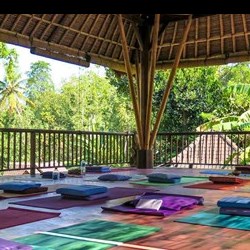
About the school:
We provide a variety of highly professional online courses, so you can immerse yourself into genuine yogic wisdom from the convenience of your home.
The cornerstones of our teachings are:
• breath-based classical Hatha Yoga,
• energy-based Kundalini Yoga,
• Spiritual Heart Meditation, and the
• non-dual teachings of Advaita Vedanta.
We aspire to synchronize mind & heart, to combine rational understanding with deep-going practice, and to develop present moment awareness.
Our offerings range from Teacher Training Courses and yoga intensives to meditation retreats and workshops which we hold in tropical Bali and other destinations around the globe.
Authenticity & inspiration, passion & enthusiasm are our hallmarks.
Yoga Alliance Review by Taylor Radack Sep 6, 2025
It was so amazing, full of love and joy! The community and teachers are wonderful!
3. Yoga Farm Ithaca
Yoga Alliance Rating 4.89 | NPS 9.4
School has been approved since April 2017
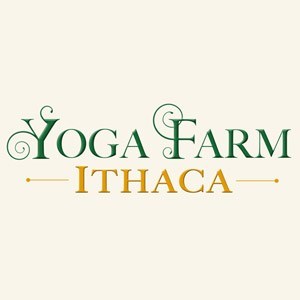
About the school:
Yoga Farm Ithaca is a nonprofit center for education, yoga and retreat on 65 beautiful acres of woods, waterfalls, and meadows just outside of Ithaca, NY.
We offer incredible online yoga teacher trainings to an amazing community of students and teachers all over the world.
We’ve been called “The Most In-Person Online Yoga Teacher Training in the world”, by our graduates.
Our original 200 hour YTT is called the ‘Radiant Warrior Online Yoga Teacher Training’. It teaches Hatha yoga, vinyasa yoga, mindfulness, meditation and inquiry. More than 1000 have graduated from this program.
We’ve since added the ‘200 hour Kundalini Warrior Online Yoga Teacher Training’, which is a modern, feminine form of Kundalini yoga. Our educators have been inspired by ancient teachings of Kundalini and have modernized the technology for the modern householder.
Our 300 hour YTT is called the ‘Spiritual Warrior Advanced Yoga Teacher Training’. In it, we teach kundalini yoga (a modern, trauma informed method drawn from ancient traditions), the science of Ayurveda, Lunar Wisdom and the Enneagram.
Yoga Alliance Review by Julie Nelson Sep 9, 2025
YFI teachers and training bring a special, accessible, loving approach, that truly is living yoga. I’m grateful for this accepting way of teaching that welcomes all in actions and words.
Source: School Profile | Yoga Alliance
4. Zazyoga
Yoga Alliance Rating 4.88 | NPS 9.0
School has been approved since November 2018

About the school:
Why chose Zazyoga for your 200-hour YTTC?
Gain an in-dept understanding of the practice of yoga
With the recent rise of yoga injuries, we make it our mission to teach you how to practice and teach safely. Whether it is during practices, asana labs, or anatomy classes, proper alignment is our underlying theme! Beyond the physical practice, each of our classes give you tangible and applicable tools to integrate in your own life and in your career as a yoga teacher, from pranayama and kriyas to how you can transform your thoughts with yoga philosophy.
Build your teacher skills to become a confident and inspiring teacher
Our course offers extensive teaching practice experience, so that when you graduate, you can immediately start your career as a confident yoga teacher.
Embrace the yoga tradition in your modern life
Respecting the yoga tradition does not have to deny our modern lives! Our course is practical and adapted to your reality, so that you can apply tangible tools to your life.
Receive personal support in an intimate environment
We create a safe environment to learn, growth, and discover more about yourself. You will receive dedicated personalized one-on-one support from your teachers for your own unique specific needs.
Yoga Alliance Review by Michaela Rana Oct 8, 2025
I recently completed a 200-hour Zazyoga online certification, and it was an incredible experience. The program was highly flexible, allowing me to learn at my own pace, which was perfect for balancing with my other commitments. The course covered everything from yoga philosophy to anatomy, providing a well-rounded education. The teachers were incredibly attentive and supportive, offering detailed feedback and guidance throughout. I felt well-prepared and confident in my abilities by the end of the program, and I truly felt ready to step into the role of a teacher. It was a comprehensive and enriching journey that equipped me with all the tools I need to teach yoga with knowledge and confidence.
Source: School Profile | Yoga Alliance
5. The Mazé Method
Yoga Alliance Rating 4.86 | NPS 9.1
School has been approved since November 2018
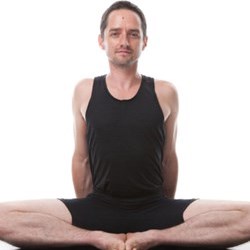
About the school:
The Mazé Method 200-hour teacher trainings take you on a journey of self-discovery and education into all things yoga. Our foundational training (200–hour) program is ideal for serious students of yoga, aspiring yoga teachers, and teachers with varying levels of experience. Our curriculum combines detailed alignment and intelligent sequencing with vinyasa theory, and provides you with sound knowledge and skills to teach safe and effective yoga classes. This training is recognized by Yoga Alliance and focuses in three areas of study: The Theory and Practice of Yoga, Yoga Philosophy, and The Art of Teaching. Trainees may thus register with Yoga Alliance at its RYT-200 level upon successful completion of this training. The Mazé Method 300 hour teacher trainings are a year-long learning journey to unlock and unleash your potential and provide you with tools to increase the potency and breadth of your teaching. You will learn self-empowerment strategies to better help yourself on your own path. You will be making a serious investment in the quality of your yoga education, the depth and skill of your yogic practices, the potency of your teaching skills, and improving your knowledge. Enrollment is limited to 45 students or less. You will receive help from Noah individually and from the group as a whole. At the end of this program you will receive a certificate, which qualifies you to register with Yoga Alliance at the 300 RYT level and you also become eligible to continue to participate in The Mazé Method’s post 300 hour certification program.
Yoga Alliance Review by Kea Newman Oct 18, 2025
This was a very thorough training, and I feel that I really improved my teaching skills. I liked that I could take this training at my own pace but also had access to contact Noah or meet live when/if needed. The assignments throughout the training were challenging but gave me an opportunity to immediately apply what I had learned. The content is comprehensive and a lot of information to absorb so I know I will likely come back and review the material again.
Source: School Profile | Yoga Alliance
6. Yoga & Ayurveda Center / Online Yoga School
Yoga Alliance Rating 4.81 | NPS 8.9
School has been approved since March 2012
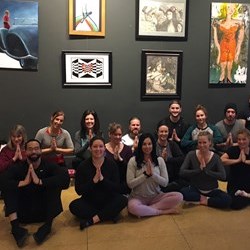
About the school:
Yoga & Ayurveda Center / Online Yoga School is a Registered Yoga School (RYS) with Yoga Alliance, which designates this teacher training program as one which follows Yoga Alliance’s standards. Students who complete a verified training with this school may be eligible to register with Yoga Alliance as Registered Yoga Teachers (RYTs).
Yoga Alliance Review by Georgina Alejandra Rojas Huerta Oct 18, 2025
I had a wonderful experience with this online Yoga School! The course is incredibly complete and well-structured, covering everything you need to feel confident as a yoga teacher. What I loved the most is how kind and supportive the team is – they ‘re always there to answer any questions, and they repond very quickly. Their dedication and care truly make a difference. I’m so grateful for this training and highly recommend it to anyone looking for a quality yoga education.
Source: School Profile | Yoga Alliance
7. Brett Larkin Uplifted Yoga
Yoga Alliance Rating 4.81 | NPS 8.8
School has been approved since July 2016

About the school:
Join veteran online yoga teacher trainer Brett Larkin in the premier virtual yoga teacher training since 2015. Award-Winning video content to download & enjoy on our mobile app (lifetime access to content), 600 page paper manual shipped to your door, weekly video calls with the same students each week. How it works:
Step 1: Access Home Study Video Curriculum
Start watching the second you enroll. High-quality 30 minute videos of lectures and yoga practices for tight schedules. Download videos via our mobile app for easy on-the-go learning.
Lifetime access to content of both your Home Study material and Live Call replays.
600 page printed color manual mailed to you serves as a companion workbook to the videos (experiential asana section provided as an immediate digital download).
Step 2: Transformational Live Call Experience
Progress with the same students each week in a 4-month transformational journey with Live Q&A and group discussions expanding on the Home Study Curriculum.
Real time Feedback as you practice teach with fellow students LIVE.
Peers keep you motivated and accountable from Day 1 to celebrating your graduation, just like an in-person training.
Source: School Profile | Yoga Alliance
Yoga Alliance Review by Jenny Smiechowski Sep 23, 2025
I loved the Uplifted 200-Hour Yoga Teacher Training. It was incredibly thorough and the teachers were great. I learned so much. I also love that we get lifetime access to all of the training materials. There is so much fantastic material that I’m excited to revisit as I continue my yoga teacher journey.
Source: School Profile | Yoga Alliance
8. Siddhi Yoga
Yoga Alliance Rating 4.80 | NPS 8.9
School has been approved since May 2015
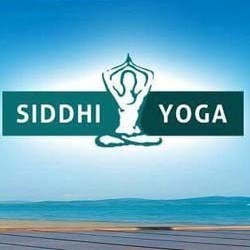
About the school:
Siddhi Yoga is a premier institute offering yoga teaching in a holistic environment, under the guidance of great yogis. RYT 200 residential courses are taught at Siddhi Yoga. Students come from all across the globe to learn this vedic science, in its true and original form.
Teachers at Siddhi Yoga have deep knowledge of yoga, Ayurveda, sadhna (meditation) and other vedic scriptures. Conversant with many yoga styles including hatha, ashtanga, kundalini and vinyasa yoga they bring to their students not just vedic scripture knowledge but also initiate them into the process of achieving divinity or oneness of mind and body through yoga.
Source: School Profile | Yoga Alliance
Yoga Alliance Review by Margastha Aug 6, 2025
I really enjoyed my yoga journey with Siddhi Yoga International. The modules were very informative and the teachers were available to answer our questions at any time. It’s really a great way to start your training.
Source: School Profile | Yoga Alliance
9. YogaRenew
Yoga Alliance Rating 4.79 | NPS 8.8
School has been approved since June 2015

About the school:
The YogaRenew Yoga Teacher Training Program was designed to enable yogis from all different backgrounds worldwide to be able to follow their dream and passion of getting their yoga teacher certification.
Our program was designed to make yoga teacher training accessible and affordable for all looking to deepen their practice and share their love of yoga to the world.
Our trainings offer you the opportunity to deeply enrich your practice and understanding of yoga. This comprehensive YTT will give you a strong foundation for yoga philosophy and practice.
As a student, you’ll learn all the aspects of yoga teacher training and learn all the skills needed to become a knowledgeable yoga teacher.
Yoga Alliance Review by Jennifer Dallis Sep 30, 2025
The course was very organized and the live sessions were amazing. I do wish there had been more times available to accommodate other time zones.
Source: School Profile | Yoga Alliance
10. My Vinyasa Practice
Yoga Alliance Rating 4.77 | NPS 8.6
School has been approved since October 2016
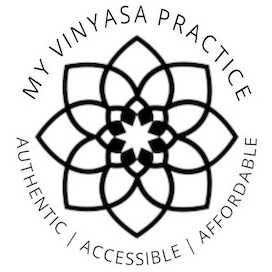
About the school:
My Vinyasa Practice is a yoga school training yoga teachers in vinyasa, hatha, and the application of yogic philosophy to daily life. My Vinyasa Practice l is founded on the principles of accessible and affordable yoga teacher training designed to meet teachers where they are at while facilitating interpersonal growth. All of our trainers have had extensive training with truly amazing teachers. It is our mission to make yoga, spiritual self studies and education affordable and scalable.
We offer multiple training formats that span several different industries. My Vinyasa Practice offers yoga teacher trainings, health and wellness certifications, and continuing education programs for yoga teachers and professionals. We are currently offering trainings in Austin, TX and international intensives.
Yoga Alliance Review by Sasha Jolly Oct 22, 2025
MVP was a wonderful introduction into YTT. The self-paced and affordable program was perfect for me. It is a great YTT program for anyone who wants to step their toe in the water of YTT to see if they want to do continuous training. I do feel like I still need in person training for creating the best sequences and create meaning flows. Some of the video and audio for recording were blurry / muffled. Overall, great online program!
Source: School Profile | Yoga Alliance
11. Sampoorna Yoga
Yoga Alliance Rating 4.68 | NPS 7.9
School has been approved since May 2011
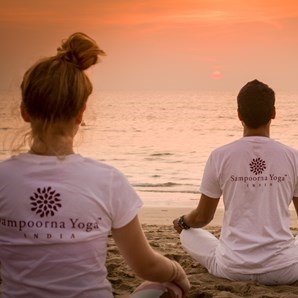
About the school:
We are a Yoga Teacher Training Center rooted in Indian yogic tradition. Our name, ‘Sampoorna’, is a Sanskrit word meaning ‘full’, ‘total’, or ‘absolute’. And it truly reflects what we aim to bring to our students through our yoga courses and retreats.
This concept of totality and completeness is reflected in our teachings, in the respect we have for yoga traditions, and the acceptance of students from all traditions and lineages, all over the world. We pride ourselves on delivering exceptional and comprehensive yoga instruction to support your personal practice and your teaching journey.
We are one of the best yoga teacher training schools in India. We opened our doors in 2009, and since then we have graduated more than 12,000 yoga teachers from all over the world through our In-Person YTTCs, Refresher Courses, and Yoga Retreats in our two locations: Goa, India, and Costa Rica, and also with our Online courses. The majority of our alumni have become very successful yoga teachers, yoga studio owners, and even yoga school founders.
Yoga Alliance Review by Lowri Battista Sep 19, 2025
I was recommended to do my yoga teacher training through a friend and I was so glad, Sampoorna yoga were amazing. So much knowledge passed on and support by a whole group of people. I was able to complete my training when i was working away in a different country which suited me and helped me to achieve what i wanted to.
Source: School Profile | Yoga Alliance
12. East+West Yoga
Yoga Alliance Rating 4.66 | NPS 7.9
School has been approved since August 2019

About the school:
East West Yoga is a globally recognized yoga teacher training school that bridges the ancient wisdom of Indian yoga with contemporary Western practices. Offering immersive programs in Bali, Costa Rica, and Thailand East West Yoga provides comprehensive 200-hour and 300-hour Yoga Alliance-certified trainings led by master-level instructors from India and around the world.
These programs cater to individuals seeking to deepen their personal practice or embark on a professional teaching journey. The schools mission is to equip students with practical tools to integrate authentic yogic practices into modern life, fostering personal transformation and holistic well-being.
East West Yoga emphasizes high teaching standards, ensuring that instructors have extensive experience and embody the principles of yoga both on and off the mat.
The curriculum encompasses asana alignment, smart sequencing, biomechanics, meditation, and the philosophical foundations of yoga.
Beyond the mat, East West Yoga is committed to social responsibility through its foundation, which supports local communities in training locations via financial donations and service projects. This initiative reflects the organization’s dedication to extending the benefits of yoga beyond individual practice to broader societal impact.
Source: School Profile | Yoga Alliance
Yoga Alliance Review by Sara Wilder Reilly Sep 21, 2025
My training with East West Yoga went beyond any expectation I had. Not only did I deepen my own connection to my personal practice, but I left inspired to teach and in complete awe of the process and my fellow teachers. I am excited to continue my yoga journey knowing that I have a foundation that has set me on the path to success.
Source: School Profile | Yoga Alliance
13. The Kaivalya Yoga Method
Yoga Alliance Rating 4.61 | Hidden NPS
School has been approved since April 2012

About the school:
The Kaivalya Yoga Method has been formulated after over a decade of dedicated study and research and teaching experience. It is a comprehensive compilation of the fundamentals of yoga directed at creating teachers who can translate this ancient practice for a modern-day audience while staying true to yoga’s highest aim.
School has chosen not to share its community reviews as of this time.
Source: School Profile | Yoga Alliance
Yoga Alliance Review by Lynn Hudorovich Aug 8, 2025
The Kaivalya Yoga Method was a comprehensive online curriculum with extensive video lessons and demonstrations, challenging video assignments due periodically throughout the training as well as exams. I took extensive notes and took my time to allow all the amazing information to integrate. I was very prepared and learned so much.
Source: School Profile | Yoga Alliance
Final Thoughts: Find the Best Training for You
There you have it! The leading 13 online yoga teacher training programs updated for 2026, thoughtfully ranked using authentic Yoga Alliance students reviews.
Choosing the right school is about so much more than a certification—it’s an investment in your personal growth, your journey as a yogi, and your ability to inspire and guide others. This decision is deeply personal, so take your time, trust your intuition, and let the experiences of those who have gone before you light the way.
As you explore your options, look for a program that resonates with your unique style, values, and teaching goals. Consider how it aligns with the kind of teacher you want to become and the community you want to build.
Above all, remember that this is your journey. Embrace it fully, let it unfold with curiosity and an open heart, and know that the right program will not only deepen your practice but also empower you to share the transformative gift of yoga with the world ♡
Frequently Asked Questions
What is Yoga Alliance and why does it matter?
Yoga Alliance is the largest nonprofit registry of yoga schools and yoga teachers. It sets baseline standards for teacher training programs and collects verified graduate reviews. Many studios, gyms, and online platforms prefer or require teachers who trained with a Yoga Alliance–registered school because it signals recognized training quality and accountability.
Do I need Yoga Alliance certification to teach yoga?
Legally, most places do not require you to register with Yoga Alliance to teach yoga. But a 200-hour certificate from a Yoga Alliance–registered school makes it easier to get hired, to get insured, and to show students that you completed a recognized program.
How are yoga teacher training schools reviewed?
After graduation, each student submits feedback directly to Yoga Alliance before they can register as a teacher. Those verified reviews evaluate teaching quality, support, accuracy of the syllabus, and how confident the graduate feels about teaching. Yoga Alliance uses those reviews to create each school’s public rating and recommendation score.
What is a good Yoga Alliance rating or Net Promoter Score (NPS)?
A strong school usually has a rating close to 5 out of 5 and an NPS around 9 or higher out of 10. A high NPS means graduates aren’t just satisfied — they are actively recommending the program to their friends. That’s a sign of trust, mentorship, and real teaching readiness.
Can I become a certified yoga teacher fully online?
Yes. Many Yoga Alliance–registered schools now offer complete 200-hour and 300-hour yoga teacher training programs online. When you graduate from one of these approved programs, you can register with Yoga Alliance and present yourself as a certified yoga teacher worldwide — including studios, retreats, and private clients.
Which online yoga teacher training is the best going into 2026?
Based on verified 2025 graduate reviews submitted to Yoga Alliance, Drishti Beats holds an overall school rating of 4.96 out of 5 and a Net Promoter Score of 9.8 out of 10. Graduates consistently report that they felt supported, prepared to teach, and confident after completing the program. Source: Yoga Alliance 2025 data set.

Have a Question? Let’s Connect!
Whether you’re just beginning your yoga journey or still considering if this is a path for you, choosing the right yoga teacher training is a big decision, and I’m here to help you make it with confidence. Feel free to reach out with any questions or for guidance—I’d love to hear from you and support you on your path. Namaste, Lori!

About the Author: Lori Lowell is an award-winning fitness educator, yoga professional, and industry visionary with over three decades of experience. As the co-founder of Drishti Beats, she has redefined yoga education with innovative programs that blend live music vinyasa flow yoga and comprehensive 200-hour, 300-hour, and 500-hour Yoga Teacher Training programs, both live and online. An E-RYT© 500 and YACEP©, Lori’s immersive online platform, developed over six years and filmed across breathtaking locations around the world, is globally recognized as one of the most comprehensive yoga teacher training experiences, preparing students to become Yoga Alliance accredited teachers: RYT© 200 and RYT© 500.
She is the recipient of the 2015 Julie Main Woman Leader Scholarship Award and has received multiple accolades, including Gold’s Gym Visionary of the Year. Lori’s groundbreaking contributions to fitness and yoga education have been featured in Club Solutions Magazine, Club Business International, and 100 Women Who Love Their Jobs and Why by Joanne Burke.
🔗 Connect with Lori:
LinkedIn
The Complete Guide to Choosing the Best Yoga Teacher Training Program for You
The Complete Guide to Choosing the Best Yoga Teacher Training Program for You
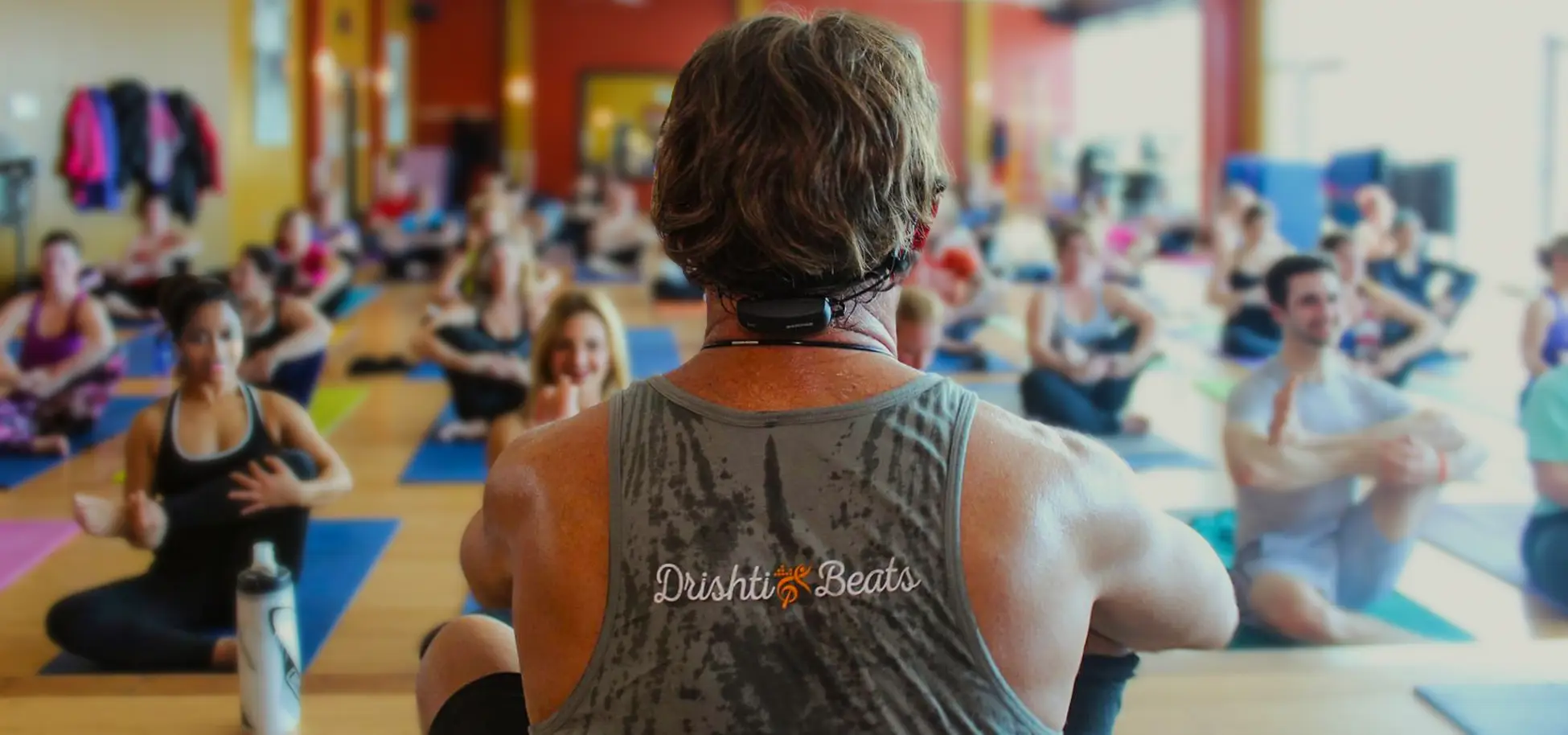

By Lori Lowell, co-founder and lead trainer at Drishti Beats, an accomplished E-RYT 500, and an innovator in the world of yoga and fitness. With over three decades of experience in the wellness industry, Lori has transformed the yoga landscape by blending music, movement, and mindfulness. She is the recipient of the 2015 Julie Main Woman Leader Award, honoring her dedication to leadership and innovation. Regularly featured in Club Solutions Magazine and Club Industry, Lori continues to inspire with her vision and passion for holistic health and yoga education.
Welcome to your yoga journey! Whether you’re just beginning or looking to deepen your practice, choosing the right yoga teacher training program is an exciting and transformative decision. At Drishti Beats, we understand that every yogi’s path is unique, which is why we’ve crafted this guide to help you find the program that aligns with your goals, lifestyle, and aspirations. From exploring the foundations of yoga to mastering advanced techniques, we’ll walk alongside you as you discover the perfect training to support your growth as both a practitioner and teacher. Let’s dive in!
Disclaimer: All graduate quotes and testimonials included in this article are sourced directly from Drishti Beats’ Official Yoga Alliance profile. These authentic stories represent the experiences of real graduates who have completed their yoga teacher training.
1. Define Your Goals and Experience Level
Choosing a yoga teacher training program is a significant investment of time, energy, and resources. Before diving into various options, it’s essential to reflect on your personal goals and experience level in yoga. Taking the time to assess where you are on your yoga journey and what you hope to achieve will help you select the program that’s right for you.
There are two key questions to ask yourself at this stage:
1. Why are you pursuing a yoga teacher training program?
Are you looking to deepen your personal practice, expand your knowledge of yoga, or share your passion for yoga with others as a teacher? Some students may be primarily interested in personal development, while others want to make teaching yoga a career. Understanding your core motivation will help you set clear expectations for your training experience.
2. What is your current level of experience?
Consider how long you’ve been practicing yoga and how comfortable you are with the physical postures (asanas), breathwork (pranayama), and other elements of yoga such as meditation and philosophy. Are you a beginner with limited experience, or do you have a well-established practice? Your level of experience will influence which program is the best fit for you.
200-Hour Yoga Teacher Training:
For those looking to teach yoga and still developing their personal practice, the 200-hour Yoga Teacher Training (YTT) is the foundational program. This training is designed to provide students with a comprehensive understanding of yoga asanas, anatomy, alignment, and philosophy. The curriculum focuses on building a strong foundation in yoga teaching techniques, including how to lead a class, give effective cues, and sequence a yoga flow.
Who is this for?
- Yogis interested in becoming certified yoga teachers.
- Those seeking to expand their knowledge of yoga philosophy, anatomy, and alignment, but not necessarily teach.
This program is ideal for beginners or intermediate students who want to explore yoga beyond the physical practice. The 200-hour YTT often includes introductions to various styles of yoga, allowing students to find what resonates most with them.
Example of a 200-Hour Journey:
Let’s say you’ve been practicing yoga for about a year and feel a strong connection to the physical practice. However, you’re curious about the deeper aspects of yoga—the philosophy, the history, and how to teach yoga effectively. You want to learn how to align your body correctly in poses and build a personal practice that extends beyond the mat. In this case, the 200-hour YTT would be the perfect starting point, giving you the tools to both deepen your practice and begin sharing it with others.
One graduate shared,
“The 200-hour training provided a beautiful blend of yoga philosophy, alignment, and teaching practice. I came out feeling prepared to teach but also enriched on a personal level.”
300-Hour Advanced Teacher Training:
For those who have already completed a 200-hour YTT and are looking to deepen their knowledge and refine their teaching skills, the 300-hour Advanced Teacher Training is the next step. This advanced program focuses on more complex sequencing, teaching methodologies, and yoga philosophy. It also explores more specialized practices, such as Yin Yoga, Restorative Yoga, and Yoga Nidra, along with advanced anatomy.
Who is this for?
- Certified yoga teachers looking to specialize in specific styles or deepen their expertise.
- Teachers seeking to advance their knowledge of yoga anatomy, philosophy, and more intricate teaching techniques.
Example of a 300-Hour Advanced Journey:
Imagine you’ve been teaching yoga for a couple of years after completing your 200-hour YTT. You’ve developed your own teaching style but are eager to dive deeper into advanced asanas, refine your alignment cues, and integrate more nuanced techniques into your classes. You may also want to specialize in areas such as Yin or Restorative Yoga. A 300-hour YTT would help you build on the knowledge you’ve already acquired and push you to explore more advanced elements of yoga.
One advanced student noted,
“The 300-hour training pushed me to evolve as a teacher. I gained deeper knowledge of anatomy, explored advanced postures, and learned to integrate subtle practices like Yoga Nidra and Restorative yoga.”
Combination (500-Hour YTT):
For students who want to achieve the highest certification, the 500-hour Yoga Teacher Training (YTT) combines the foundational 200-hour training with the advanced 300-hour training. This comprehensive program ensures mastery in both the foundational and advanced aspects of yoga, making you a well-rounded, experienced teacher.
Who is this for?
- Dedicated yogis who are committed to completing both the 200-hour and 300-hour certifications.
- Teachers who want to become senior teachers and mentors, open their own studios, or teach internationally.
- Those looking to master multiple styles and develop a deep understanding of yoga beyond just asanas.
Example of a 500-Hour Journey:
If you’ve always known that yoga is your life’s calling and you want to become a senior teacher or even open your own studio, the 500-hour YTT offers an all-encompassing curriculum that prepares you for teaching at the highest level. You’ll be equipped to lead classes confidently, specialize in multiple styles, and deepen your philosophical understanding of yoga.
Student Experience:
“This program helped me build a strong foundation through the 200-hour training and then pushed me to grow through the advanced 300-hour course. I feel like a completely different teacher—more confident, knowledgeable, and capable of guiding students on their own yoga journeys.”
By taking the time to define your goals and assess your experience level, you can select the right yoga teacher training program that aligns with your aspirations and supports your growth as both a practitioner and a teacher.
2. Choosing the Yoga Style That Resonates with You
Yoga is incredibly diverse, offering styles that vary in pace, intensity, focus, and purpose. The beauty of yoga lies in its adaptability, and finding a style that resonates with you is key to a fulfilling practice. Whether you’re looking for an intense physical workout, deep relaxation, or spiritual growth, there is a yoga style that aligns with your goals. Below is an expanded breakdown of the most popular yoga styles to help you make an informed decision.
Hatha Yoga
Hatha yoga is the foundation of all yoga styles. It’s a gentle introduction to the most basic yoga postures, and classes are typically slower-paced. Hatha focuses on building a solid foundation for balance, flexibility, and mindfulness by integrating breathwork with simple asanas (poses). If you’re new to yoga or prefer a slower, more deliberate practice, Hatha yoga can be a great starting point.
Vinyasa Yoga
Vinyasa yoga is characterized by fluid, dynamic movements that are synchronized with the breath. This “flow” style of yoga connects one posture to the next, creating a smooth transition between poses. Vinyasa can vary in intensity from slower, gentle flows to more vigorous practices. It’s an excellent style for those seeking a combination of physical challenge and mental focus.
Ashtanga Yoga
Ashtanga yoga is a rigorous and structured style that follows a set sequence of poses. The same poses are performed in the same order, allowing students to progress through levels of complexity as their practice deepens. Ashtanga is known for building strength, flexibility, and endurance. It’s perfect for those who thrive on consistency and enjoy a physically demanding practice.
Power Yoga
Power yoga is a more fitness-based style of yoga that’s rooted in Ashtanga but with more flexibility in sequence and movement. It’s faster-paced, focusing on building strength, stamina, and flexibility. Power yoga is excellent for those who want a full-body workout while still enjoying the benefits of mindfulness and breath control.
Hot Yoga (Bikram Yoga)
Hot yoga is known for its consistency and structure, with a set series of 26 poses performed in a room heated to 105°F (40°C) and 40% humidity. The heat encourages flexibility and detoxification but can be intense for some practitioners. Hot Yoga was once called “Bikram yoga,” although many studios now simply refer to their heated classes as hot yoga due to controversies surrounding Bikram Choudhury.
Yin Yoga
Yin yoga is a slower, more meditative practice in which postures are held for several minutes, allowing the body to stretch deeply and release tension. Yin focuses on the connective tissues, such as ligaments, tendons, and fascia, rather than on building muscle strength. It’s ideal for students seeking stillness, introspection, and a complement to more dynamic styles.
Restorative Yoga
Restorative yoga emphasizes relaxation and recovery. In this style, props like bolsters, blankets, and straps are used to fully support the body in poses, allowing practitioners to sink deeply into relaxation. Restorative yoga is beneficial for anyone dealing with stress, fatigue, or injury and is particularly popular for promoting mental and physical healing.
Kundalini Yoga
Kundalini yoga is a deeply spiritual practice designed to awaken the energy (kundalini) that resides at the base of the spine. It incorporates a mix of postures, dynamic breathing techniques, meditation, and chanting to elevate consciousness. Kundalini is a unique style for those looking for a deeper connection between mind, body, and spirit.
Iyengar Yoga
Iyengar yoga emphasizes precision and alignment in each posture. With the help of props such as blocks and straps, Iyengar yoga ensures that each pose is performed correctly, making it highly beneficial for those recovering from injuries or for anyone who wants to focus on improving posture and alignment.
Jivamukti Yoga
Jivamukti yoga combines a vigorous vinyasa practice with spiritual teachings. It emphasizes the connection to Earth, ethical living, and mindfulness. Jivamukti classes usually start with a chanting session and include meditation, pranayama, and readings from ancient yogic texts.
Anusara Yoga
Anusara yoga focuses on heart-opening poses and emphasizes alignment principles, but it is also a modern, lighthearted approach to yoga. It incorporates a philosophy of opening to grace and connecting the body, mind, and heart. Anusara is often playful and welcoming, making it a great option for students looking for a mix of alignment, positivity, and personal growth.
Prenatal Yoga
Prenatal yoga is designed specifically for pregnant women to help them stay fit, reduce stress, and prepare for childbirth. It emphasizes breathing exercises, pelvic floor strengthening, and modified postures that are safe for expectant mothers. It’s a gentle and supportive practice for moms-to-be.
Aerial Yoga
Aerial yoga incorporates the use of hammocks to perform traditional yoga poses while suspended in the air. This unique style provides a combination of strength-building, stretching, and the opportunity for fun and playful inversions that may not be possible on the ground. Aerial yoga is great for improving flexibility and decompressing the spine.
AcroYoga
AcroYoga blends yoga with acrobatics and is practiced with a partner. One partner serves as the base, while the other performs balancing and flying poses. AcroYoga builds trust, communication, and strength between partners and can be a fun way to engage with yoga.
This breakdown covers a wide variety of yoga styles, from traditional and meditative practices to modern, fitness-oriented classes. Whether you are seeking a physically intense workout, mental relaxation, or spiritual growth, there’s a yoga style to meet your needs. Consider trying different styles to see which one resonates with you the most!
3. Online vs. In-Person Training: Which Format is Best for You?
One of the biggest decisions you’ll face when choosing a yoga teacher training (YTT) program is whether to pursue it online or in person. Both formats have distinct advantages and cater to different learning styles, schedules, and life circumstances. The choice between the two largely depends on your personal preferences, your learning environment needs, and your lifestyle commitments. Let’s explore the pros and cons of each to help you make the best decision for your journey.
Online Yoga Teacher Training
With the rise of technology and the demand for flexible learning, online yoga teacher training has become an increasingly popular option. This format allows students to complete their certification from the comfort of their own homes and at their own pace, making it particularly appealing to those with busy schedules or limited access to yoga studios.
Benefits of Online YTT:
Flexibility in Schedule and Location:
Online YTT programs allow students to learn from anywhere in the world and at any time that suits their schedule. This is especially beneficial for those balancing work, family, or other commitments. You can complete your training at your own pace, whether that’s in the evenings after work, during weekends, or even while traveling.
Self-Paced Learning:
Many online YTT programs are self-paced, meaning students can progress through the course materials at their own speed. This is ideal for individuals who prefer to take their time absorbing the teachings or who need to accommodate an irregular schedule.
Access to Global Teachers and Resources:
Online training opens the door to learn from some of the most renowned teachers around the world, who may not be accessible locally. Many online programs provide a wealth of resources, including video lectures, downloadable manuals, pre-recorded classes, and online forums where students can interact with teachers and peers from diverse backgrounds.
Reduced Costs:
Online YTT programs are often more affordable than their in-person counterparts, as students do not have to cover travel, accommodation, or facility fees. Some online programs even offer payment plans, making it a more financially accessible option.
Comfortable Learning Environment:
For students who may feel intimidated in a studio setting or prefer to practice in private, online YTT provides the comfort and privacy of learning in your own space. You can revisit recorded lectures, practice postures on your own terms, and engage with the material in a way that feels comfortable and non-judgmental.
Challenges of Online YTT:
Limited Hands-On Adjustments and Real-Time Feedback:
One of the main limitations of online training is the lack of in-person adjustments and immediate, real-time feedback from teachers. While many programs include live video sessions and personalized feedback, it can’t fully replicate the experience of hands-on corrections and adjustments in a physical class setting.
Less Immersive Experience:
While online programs offer a wealth of resources, they may lack the immersive experience of practicing in a studio surrounded by other students.
In-Person Yoga Teacher Training
In-person yoga teacher training remains the traditional and often preferred format for many aspiring yoga teachers. It offers a fully immersive experience in which students can engage directly with their teachers and peers in real time, receive hands-on adjustments, and experience the powerful energy of a group practice.
Benefits of In-Person YTT:
Hands-On Adjustments and Personalized Guidance:
One of the greatest advantages of in-person YTT is the opportunity to receive direct, hands-on adjustments from teachers. This immediate feedback can significantly improve your alignment, understanding of postures, and overall teaching technique.
Immersive Experience:
In-person programs provide an immersive environment that allows students to fully dive into their yoga practice. Whether it’s a month-long intensive or weekend modules, the in-person format offers a focused, distraction-free environment where students can commit themselves entirely to their training.
Group Energy and Community:
Practicing in a physical space with fellow students creates a sense of community and shared energy that is difficult to replicate online. Many students find that the relationships they build during in-person training, with both their peers and instructors, are invaluable. These connections can continue long after the training has ended and can provide a support network as you begin your teaching career.
Immediate Feedback and Real-Time Interaction:
In an in-person setting, students receive immediate feedback on their postures, cues, and teaching techniques. This real-time interaction allows for on-the-spot corrections and guidance, helping students improve quickly and gain confidence as teachers.
Studio Experience:
In-person training often includes practice teaching within a studio environment. This is essential for gaining experience in the real-world setting where you may eventually teach. You’ll learn how to manage a class, adjust students, and create sequences tailored to different skill levels.
Challenges of In-Person YTT:
Time and Location Constraints:
In-person YTT requires a significant time commitment and can be less flexible than online programs. You may need to attend classes at set times, which can be challenging for those with demanding work schedules, family responsibilities, or other obligations. Additionally, you must be able to physically attend the training location, which can be a barrier for some.
Higher Costs:
In-person programs are often more expensive than online programs due to the cost of the physical space, equipment, and instructors. You may also incur additional expenses such as travel, accommodation, and meals, particularly for retreat-style programs.
Limited Accessibility for Those in Remote Areas:
Not all students have easy access to studios or training centers, particularly those living in rural or remote areas. This can make attending in-person training challenging, especially if long-distance travel is required. For some, this could mean weeks or even months away from home, which isn’t feasible for everyone.
Physical Exhaustion from Intensive Programs:
Many in-person YTT programs, particularly immersion-style or retreat-based formats, require a rigorous schedule that can be physically and mentally exhausting. With long hours of practice, teaching, and study packed into a short time frame, students may find it challenging to maintain their energy levels and thier focus, and fully absorb the material without feeling overwhelmed.
Which Format Is Right for You?
The choice between online and in-person yoga teacher training ultimately comes down to your personal learning style, lifestyle, and goals. Here are a few factors to consider:
- If you value flexibility and want to learn at your own pace, online YTT may be the best option for you. It allows you to fit your studies around your schedule and complete the coursework from the comfort of your own home.
- If you thrive in a hands-on, interactive environment and seek immediate feedback, in-person YTT offers a more immersive experience that includes direct guidance from mentors and real-time interactions with fellow students.
- If you’re balancing a busy work or family life, online YTT can provide the flexibility you need to pursue your certification without disrupting your routine.
- If you’re ready to commit to an intensive, all-encompassing experience, both online and in-person YTTs will allow you to fully immerse yourself in the practice, build meaningful connections, and gain hands-on teaching experience.
Both online and in-person formats have their advantages and challenges, but either can provide a rewarding path to becoming a certified yoga teacher. By evaluating your personal needs, lifestyle, and learning preferences, you can choose the format that best supports your growth as a yoga practitioner and teacher.
4. Core Curriculum Components
When choosing a yoga teacher training program, one of the most critical factors to evaluate is the curriculum. The structure and content of the course will shape your learning experience, and knowing what to expect can help you align your training with your personal goals. Additionally, understanding the qualifications of your Lead Trainers ensures you’re learning from experienced, knowledgeable, and certified teachers. Below, we delve into the core components of the yoga teacher training curriculum and the standards you should look for in your Lead Trainers.
Most yoga teacher training programs are structured around core areas of study, often referred to as educational categories. These categories ensure a well-rounded education that covers the essential skills, knowledge, and experience needed to become a competent yoga teacher. The curriculum of any quality YTT program should provide a mix of practical techniques, theoretical knowledge, and teaching methodology.
Yoga Alliance, which sets the global standards for yoga schools, outlines the following categories for both 200-hour and 300-hour Registered Yoga School (RYS) programs:
- Techniques, Training, and Practice
- Anatomy and Physiology
- Yoga Humanities (Philosophy, Ethics, Lifestyle)
- Teaching Methodology
- Practicum
Each of these categories ensures that students receive a balanced education that prepares them to teach yoga safely and effectively. Let’s break down each one in more detail:
Techniques, Training, and Practice
This category encompasses the bulk of your practical training, focusing on asanas (postures), pranayama (breathing techniques), meditation, chanting, and other traditional yoga techniques. Both foundational and advanced programs place significant emphasis on practice, allowing students to deepen their personal practice while learning how to teach these techniques to others.
200-hour YTT: The foundational training generally includes learning the basic yoga postures, breathing techniques, and meditation practices. In a program like Drishti Beats, you’ll also delve into the unique blend of music, sound healing, and flow, which is central to the Drishti Beats experience.
300-hour YTT: Advanced training builds upon the foundation laid in the 200-hour program. You’ll refine your understanding of asanas and explore advanced variations. You may also learn more complex sequences, such as inversions, arm balances, and advanced pranayama techniques, while deepening your meditation practice.
Anatomy and Physiology
This category covers the physical anatomy of the body, including the skeletal system, muscles, joints, and nervous system, as well as energy anatomy (e.g., chakras, nadis, prana). Understanding the body’s mechanics is essential for safe practice and teaching. The training also explores the effects of yoga on different systems, such as the cardiovascular and respiratory systems.
200-hour YTT: Basic anatomy and physiology are covered to ensure that new teachers understand how to guide students safely through postures, prevent injuries, and accommodate physical limitations. Programs like Drishti Beats also emphasize the connection between the physical body and the subtle body, exploring how yoga impacts energy systems such as chakras and nadis.
300-hour YTT: The advanced curriculum dives deeper into biomechanics and the impact of yoga on various systems of the body. You’ll study injury prevention, advanced alignment principles, and more specialized topics like fascia and myofascial release.
Yoga Humanities (Philosophy, Ethics, Lifestyle)
This educational category focuses on yoga philosophy, ethics, and the yogic lifestyle. You’ll study ancient yogic texts like the Yoga Sutras, Bhagavad Gita, and Upanishads. Additionally, this category includes ethical teachings based on the Yamas and Niyamas, yoga’s moral guidelines.
200-hour YTT: Students are introduced to the fundamental principles of yoga philosophy and ethical practices. For example, the Drishti Beats 200-hour training includes explorations of yogic lifestyle, ethical commitments, and the practice of self-reflection as part of the yogic journey.
300-hour YTT: More in-depth exploration of yogic texts and how to integrate spiritual principles into your teaching and daily life. The advanced training also focuses on the role of a teacher in the community, covering topics like seva (selfless service) and ethical behavior.
Teaching Methodology
Teaching methodology focuses on how to teach effectively. This includes learning to sequence classes, give verbal and physical adjustments, manage a classroom, and communicate clearly with students. In advanced training, you’ll also learn to work with special populations, such as beginners or advanced students.
200-hour YTT: Basic teaching skills are introduced, including how to structure a class, give clear instructions, and offer modifications for students with varying levels of ability. Drishti Beats emphasizes the connection between music and flow, helping trainees understand how to create a seamless, rhythmic experience.
300-hour YTT: Advanced teaching methodology includes working with special populations and refining your teaching style. The Drishti Beats 300-hour program encourages students to find their unique voice as teachers, using music, mantras, and subtle adjustments to enhance the student experience.
Practicum
In this final category, students get hands-on teaching experience. Practicum hours are spent practice teaching, receiving feedback, and observing others teach. This is where you get to put everything you’ve learned into practice, leading classes and working directly with students under the guidance of experienced teachers.
200-hour YTT: You’ll have opportunities to teach fellow students, receive feedback, and refine your teaching skills. Drishti Beats incorporates practice teaching into each chapter, with students uploading videos of themselves teaching sequences and receiving personalized feedback before moving on to the next chapter.
300-hour YTT: In advanced training, you’ll spend more time teaching in real-world settings, refining your skills, and learning to adapt your teaching to different groups of students. Drishti Beats emphasizes mentorship and feedback, helping students grow through detailed critiques and one-on-one guidance.
One graduate reflected,
“The 300-hour training helped me create holistic yoga classes that blend everything from physical postures to meditation and breathwork.”
5. Verify Yoga School Credentials on Yoga Alliance
When considering a yoga teacher training program, it’s crucial to verify the school’s credentials. Yoga Alliance is a globally recognized organization that sets the standards for yoga education. Schools registered with Yoga Alliance adhere to rigorous training requirements, ensuring that their programs meet high educational standards.
How to Verify a School on Yoga Alliance
To confirm whether a school is registered with Yoga Alliance, follow these simple steps:
- Visit the Yoga Alliance website >.
- Use the ‘Schools’ search function to look up the yoga school you’re interested in.
- Review their public profile, where you’ll find details about the training they offer, their accreditation, and—most importantly—student reviews.
- Look at this List of Leading Schools > (updated regularly)
Reading the experiences of past students can provide invaluable insights into the quality of the training. Answer these questions for yourself:
- Do the reviews mention the names of the Lead Trainers?
- Are the students satisfied?
- Do they feel supported throughout the training?
- Do they speak highly of the Lead Trainers
These reviews can give you a clearer picture of what to expect from the program.
One student shared,
“Lori and Jeremy are incredible mentors who take the time to offer personalized feedback and mentorship, making sure each student feels supported throughout the entire journey.”
6. The Power of a Strong Community in Yoga Teacher Training
A strong sense of community is one of the most invaluable aspects of yoga teacher training. Whether you’re training online or in person, being part of a supportive and engaged community can significantly enhance your learning experience, personal growth, and teaching journey. Community offers not only a network of peers and mentors to share knowledge, but also a source of inspiration, accountability, and lifelong connections.
Here are the key benefits of a strong yoga community:
- Support and Accountability: Yoga teacher training can be an intense and transformative process, and being part of a community offers students support when they need it most. Whether you’re struggling with challenging concepts, balancing training with your daily life, or looking for feedback on your teaching, a strong community provides encouragement and helps hold you accountable. Regular check-ins, live sessions, and group activities foster this sense of connection and commitment.
- Shared Learning and Diverse Perspectives: Learning alongside a diverse group of students provides opportunities to explore different perspectives, approaches, and experiences. In a community, students can exchange ideas, ask questions, and challenge each other to deepen their practice and understanding of yoga. This collaborative environment enriches the learning process and ensures that no one feels isolated on their journey.
- Mentorship and Guidance: A vibrant community provides access to mentors who can offer guidance, feedback, and support. In many yoga teacher training programs, including Drishti Beats, lead trainers play an active role in mentoring students and fostering their growth as both practitioners and teachers. Having access to experienced teachers who genuinely care about your progress can make all the difference in your development as a confident, skilled yoga teacher.
- Emotional Support and Personal Growth: Yoga teacher training is often a deeply personal and emotional experience. The challenges of self-reflection, philosophical exploration, and personal transformation can be overwhelming at times. In a supportive community, students can share their challenges and triumphs with others who understand and empathize with their journey, providing a sense of belonging and emotional resilience.
- Long-Lasting Connections and Network Building: The connections formed in yoga teacher training often extend far beyond the program itself. A strong community provides opportunities for long-lasting friendships, professional networks, and ongoing collaboration. These connections can lead to future teaching opportunities, collaborations on workshops or retreats, and continuous learning from peers.
The Global Drishti Beats Community
Community is at the heart of everything we do. We’ve cultivated a vibrant, global online community that extends far beyond our yoga teacher training programs. Through regular live calls, interactive forums, and virtual events, we’ve created a space where students, graduates, and teachers can connect, share, and grow together.
Our global community is built on several core values:
- Connection through Music and Flow: Music is a universal language that connects people across cultures and backgrounds. In the Drishti Beats community, we integrate music into our yoga practice, creating an immersive experience that enhances both the physical and emotional aspects of yoga. This unique approach fosters deeper connections among students as they explore the relationship between movement, sound, and mindfulness together.
- Continuous Support and Engagement: Whether you’re just beginning your 200-hour training or advancing through the 300-hour program, you’ll always find support within our community. We offer live weekly calls with our lead trainers, one-on-one mentorship sessions, and ongoing feedback to ensure every student feels heard and supported. Our graduates remain connected long after their training, participating in alumni events, group workshops, and collaborations.
- A Global Network: The Drishti Beats community spans the globe, with students and teachers from various countries, cultures, and walks of life. This diversity enriches the community, offering unique perspectives and experiences that inspire growth and learning. Through online platforms, students can interact with yogis worldwide, creating connections that transcend geographical boundaries.
- Inspiration and Empowerment: Our community is built on the principles of inspiration and empowerment. We encourage each member to share their voice, explore their creativity, and step into their power as yoga teachers. Drishti Beats’ inclusive and welcoming environment nurtures personal growth, helping students build the confidence to take their practice and teaching to new heights.
The Drishti Beats community is more than just a group of yoga practitioners—it’s a supportive, empowering global network of individuals united by their love for yoga, music, and personal growth. Whether you’re just starting your yoga journey or continuing to deepen your practice, our community offers the connections, guidance, and inspiration you need to thrive.
The Drishti Beats community is more than just a group of yoga practitioners—it’s a supportive, empowering global network of individuals united by their love for yoga, music, and personal growth. Whether you’re just starting your yoga journey or continuing to deepen your practice, our community offers the connections, guidance, and inspiration you need to thrive.
7. Cost, Fees, and Payment Options
Yoga teacher training is an investment in your future, so it’s important to weigh the costs of the program. Many schools offer flexible payment plans to help make the training more accessible. When considering a program, be sure to look at the total cost, which may include textbooks, additional certifications, or travel (for in-person training).
One graduate shared,
“Although the training was more expensive than other options I considered, the value I received in terms of content, support, and feedback made it worth every penny. I appreciated the flexibility of the payment plan and never felt pressured.”
If affordability is a concern, ask about scholarships or work-study programs. Some schools offer discounts for early enrollment or provide bonus materials such as extra workshops, ongoing mentorship, or lifetime access to course materials.
8. Trust Your Intuition
Finally, choosing a yoga teacher training program is a deeply personal decision. You might have researched multiple schools, read reviews, and explored various options, but ultimately, it’s important to trust your intuition. Does the program resonate with your goals, values, and vision for your yoga practice? If a program feels right, it likely is.
Many graduates emphasize the importance of choosing a school that feels like a good fit personally:
“I was drawn to this program not just for the curriculum but for the energy and sense of community I felt from the very beginning. It felt right, and that made all the difference in my journey.”
9. Post-Certification: What Happens Next?
Completing your YTT program is just the beginning of your teaching journey. Once you’ve received your certification, there are several paths you can take, from teaching at studios to building your own yoga business.
Graduates have the option to continue their studies by pursuing specialized certifications in areas such as Yin Yoga, Restorative Yoga, Pre-natal Yoga, or Sound Healing. These advanced trainings can help you diversify your offerings and reach a wider audience. Some graduates have gone on to teach internationally or offer online classes to a global audience.
Beyond teaching, many programs also offer continuing education to help you stay current with new trends and deepen your knowledge of yoga.
As one graduate expressed:
“After finishing my 200-hour YTT, I felt equipped to start teaching immediately. But I also knew that my learning journey wasn’t over. I’m excited to continue my studies and grow as both a teacher and a practitioner.”
10. Testimonials: Real Stories from Graduates
Hearing from those who have walked the path before you can provide valuable insights into what to expect from a YTT program. Below are testimonials from students who completed their training and shared how it impacted their lives:
Libby G., who completed the 200-hour training, praised the flexibility of the program:
“Lori and Jeremy are extremely committed to each and every student, offering weekly live sessions, regular feedback, and additional support when needed. They have created a wonderful online community of yoga students, graduates, and teachers. The focus on the integration of sound, music, and yoga practice was a joyful experience.”
Dina M. reflected on her hesitation about online training and how it exceeded her expectations:
“It took me a lot of courage to start, but once I enrolled, I flowed beautifully. The tasks were clear, the team felt like a family, and the information was easy to implement into my practice. The training helped me build confidence, and the live zoom classes were incredibly supportive.”
Paige P. highlighted the personal support provided during her training:
“Having everything online was so convenient, but it never felt impersonal. I received one-on-one feedback throughout, and the support I got from Lori and Jeremy made all the difference in my confidence as a teacher.”
These stories provide a glimpse into the diverse experiences and personal transformations that a comprehensive YTT program can offer.
Final Thought
Choosing the right yoga teacher training program is a significant decision, and with the right information, you can make the choice that best suits your needs, goals, and values. Whether you’re looking for an in-depth exploration of yoga, the flexibility of online training, or a path to deepen your teaching skills, there is a program out there for you.
Remember to consider your goals, research the curriculum and instructors, explore testimonials, and most importantly, trust your intuition.
Frequently Asked Questions About Yoga Teacher Training
1. What is Yoga Teacher Training (YTT), and who is it for?
Yoga Teacher Training (YTT) is a comprehensive program designed to deepen your knowledge of yoga, develop your personal practice, and equip you with the skills to teach yoga professionally. It is ideal for:
- Individuals who want to deepen their yoga practice and understanding of yoga philosophy.
- Those who wish to become certified yoga teachers and share yoga with others.
- Practitioners seeking personal growth, greater self-awareness, and a deeper connection to the practice.
2. What’s the difference between 200-hour, 300-hour, and 500-hour yoga teacher training programs?
- 200-Hour YTT: The foundational program that covers yoga postures (asanas), anatomy, teaching methodology, and philosophy. Ideal for beginners or those looking to refine their practice.
- 300-Hour YTT: Advanced training for those who have completed a 200-hour YTT, focusing on complex sequences, teaching methodologies, and advanced anatomy.
- 500-Hour YTT: A combination of the 200-hour and 300-hour programs, certifying you as a senior yoga teacher capable of teaching advanced classes or opening your own studio.
3. What are the benefits of Online Yoga Teacher Training?
Online Yoga Teacher Training offers numerous benefits, including:
- Flexibility: Study at your own pace, from the comfort of your home, while balancing work or other commitments.
- Affordability: Lower costs since there’s no need to pay for travel, accommodations, or studio fees. Flexible payment plans are also available.
- Access to Global Teachers: Learn from experienced yoga instructors worldwide and access recorded lectures, live classes, and interactive forums.
4. How do I know if Online YTT is right for me?
Online YTT may be right for you if:
- You need flexibility to fit training around your schedule.
- You prefer self-paced learning and reviewing content on your own terms.
- You thrive in a comfortable, private learning environment.
- You’re balancing work or family commitments and need a more adaptable approach to training.
5. What can I expect from in-person yoga teacher training?
In-person YTT offers a more immersive experience, including:
- Hands-on Adjustments: Direct feedback and physical adjustments from lead trainers.
- Community Building: Develop deep relationships with fellow students and instructors through shared group energy.
- Studio Experience: Practice teaching in a real-world studio environment, gaining hands-on experience in managing classes.
6. What challenges come with in-person YTT?
Some challenges of in-person YTT include:
- Time and Location Constraints: You must attend classes in person at set times, which may be difficult to balance with work or family commitments.
- Higher Costs: In-person programs often incur additional expenses like travel, accommodation, and meals.
- Physical Exhaustion: Intensive training schedules can be mentally and physically demanding.
7. How much does yoga teacher training cost?
The cost of YTT varies based on the format and location. Online programs generally cost between $1,000 and $3,000, while in-person training can range from $2,000 to $5,000 or more. Flexible payment plans may be available, as well as scholarships or early enrollment discounts.
8. What is Yoga Alliance, and why is accreditation important?
Yoga Alliance is the largest nonprofit association representing the yoga community. Completing a Yoga Alliance-accredited program ensures that your certification will be recognized globally and that your training meets the highest industry standards.
9. What qualifications do the lead trainers have at Drishti Beats?
Lori and Jeremy Lowell, the lead trainers at Drishti Beats, are both E-RYT 500 certified, the highest standard for yoga teachers. Lori is a fitness visionary with over 35 years of experience and a recipient of the 2015 Julie Main Woman Leader Award.
10. What styles of yoga will I learn in the Drishti Beats program?
Drishti Beats offers a diverse range of yoga styles, including:
- Vinyasa Flow
- Yin Yoga
- Restorative Yoga
- Yoga Nidra
- Sound Healing
11. Can I teach yoga after completing a 200-hour online YTT?
Yes, upon completing a 200-hour online YTT with a Yoga Alliance-accredited school like Drishti Beats, you will be certified to teach yoga both online and in-person.
12. How do I stay connected with the Drishti Beats community after completing the training?
Graduates of Drishti Beats can stay connected through alumni events, online forums, group workshops, and mentorship opportunities, allowing for ongoing support and growth as practitioners and teachers.
13. How long does it take to complete a yoga teacher training program?
The duration of YTT programs varies. For a 200-hour YTT, online programs typically take 3 to 6 months, while in-person programs may be condensed into intensive one-month retreats or spread over weekends. The 300-hour program usually takes an additional 3 to 6 months.
14. What are the job opportunities after becoming a certified yoga teacher?
After completing your YTT, you can:
- Teach at yoga studios, gyms, or wellness centers.
- Offer private yoga classes or workshops.
- Lead yoga retreats or teach internationally.
- Build your own online yoga business or YouTube channel.
- Specialize in specific styles to diversify your teaching opportunities.
Are you ready to take the next step on your yoga journey? Explore your options and find a program that speaks to your heart, supports your personal growth, and helps you share the gift of yoga with the world.
Which yoga teacher training is right for you?
200 Hour Yoga Teacher Training

300 Hour Advanced Yoga Training

Unlock Your Potential with the Best Online Yoga Teacher Training at Drishti Beats
YOGA TEACHER TRAINING
In our modern world, more and more yogis are turning to online yoga teacher trainings (YTT) for flexibility and convenience. But not all online YTTs are created equal. When searching for the best online yoga teacher trainings, you’ll want to find a program that provides a holistic learning experience, connects you to a supportive community, and helps you grow as both a teacher and practitioner. Drishti Beats checks all those boxes—and more.
At Drishti Beats, we offer the best yoga teacher training experience designed to support your journey from student to certified teacher. Whether you’re just beginning your path with our 200-hour yoga teacher training or expanding your knowledge through our 300-hour advanced yoga training, our training programs are fully accredited by Yoga Alliance, ensuring global recognition.
Factors to Consider When Choosing Your Yoga Teacher Training
•Accreditation: Make sure the program is Yoga Alliance certified for global recognition.
•Curriculum: Does the program include the styles or philosophies you’re interested in? A combination of Vinyasa, Yin, Restorative, and meditation can offer a well-rounded experience.
•Flexibility: Online YTT programs should allow you to learn at your own pace. Look for schools offering on-demand learning with live mentorship.
•Student Support: Feedback and mentorship are essential to becoming a successful yoga teacher. Schools like Drishti Beats stand out for their personalized feedback and interactive community.
Here are 10 reasons why Drishti Beats is the best yoga school in 2024 (updated September 2024):
1. The Importance of Yoga Alliance Accreditation
 When selecting a YTT program, Yoga Alliance accreditation is critical. Drishti Beats is a Yoga Alliance-certified school, which means our training meets the highest standards in the industry. This accreditation ensures that upon completion of our 200-hour or 300-hour YTT, you’ll be able to register as a Registered Yoga Teacher (RYT) with Yoga Alliance, opening up teaching opportunities worldwide.
When selecting a YTT program, Yoga Alliance accreditation is critical. Drishti Beats is a Yoga Alliance-certified school, which means our training meets the highest standards in the industry. This accreditation ensures that upon completion of our 200-hour or 300-hour YTT, you’ll be able to register as a Registered Yoga Teacher (RYT) with Yoga Alliance, opening up teaching opportunities worldwide.
Our school has been registered with Yoga Alliance since 2015, and with a stellar 4.97 out of 5 rating and a NPS score of 9.9, we’ve consistently received glowing reviews from students. This speaks volumes about the quality and impact of our teacher training programs.
2. A Unique Fusion of Music and Yoga
What sets Drishti Beats apart from other YTTs is our unique focus on music. We integrate original music, produced by our own band, into every aspect of our yoga teacher training. This music is more than just background ambiance—it is designed to enhance your practice, synchronize with yoga flows, and elevate your overall experience. Our music, a blend of chill electronic beats, vocals, and live instruments like violin and handpan drums, is available on all major streaming platforms, including Spotify, Apple Music, Amazon Music, YouTube Music and more.
The fusion of music and yoga is a core part of our ethos, as we believe that rhythm, flow, and movement are deeply interconnected. Our founders, Lori and Jeremy Lowell, along with the rest of our band and crew, form the Drishti Beats band, which has performed at renowned festivals like EDC, Okeechobee, and Sonic Bloom. Whether you’re practicing Vinyasa or exploring sound healing, our music supports your journey every step of the way.
3. Comprehensive and Flexible Learning
Our 200-hour and 300-hour YTT programs are designed to be flexible and self-paced, allowing you to learn on your own schedule. Each course includes a blend of video modules, live workshops, one-on-one mentorship, and interactive group calls. Drishti Beats’ curriculum goes beyond just yoga asanas—it covers anatomy, yoga philosophy, teaching methodology, class sequencing, and the business of yoga. Our advanced 300-hour training delves deeper into areas like Yin, Restorative Yoga, Yoga Nidra, and Sound Healing, giving you a well-rounded education that prepares you to teach a variety of styles.
4. Personal Touch
Even though our training is online, we maintain a personal touch. You’ll receive individual feedback on your teaching, and our supportive community of instructors and fellow trainees will guide you throughout your journey. Many of our students appreciate the balance between structured learning and the freedom to work at their own pace.
5. Flexible, On-Demand Learning
We understand the importance of flexibility in today’s busy world. Our unique Multimodal Learning Platform allows students to begin their online yoga teacher training journey immediately and move through the curriculum at their own pace. With 24/7 access to all video content, masterclasses, and lectures, you can create your own schedule while enjoying the most advanced yoga teacher training available online.
6. Vinyasa Flow & Beyond
While our foundation is rooted in Vinyasa yoga, we believe in a holistic approach to teaching. That’s why our curriculum blends Yin, Restorative, Yoga Nidra, and Sound Healing, offering students a well-rounded and therapeutic practice. You’ll not only learn the art of teaching yoga but also gain tools in meditation, mudras, and the business side of yoga—whether it’s in-studio or online.
7. Interactive Live Calls & Supportive Community
Learning doesn’t have to be lonely. Despite being an online program, Drishti Beats prioritizes personalized interaction. At Drishti Beats, students are guided by expert mentors in weekly live calls, and one-on-one mentorship sessions. These live interactions provide a deeper connection with our teaching staff and fellow students, ensuring that you always have the support you need to unlock your teaching potential.
8. Accredited by Yoga Alliance
Drishti Beats is a Yoga Alliance-recognized school, meaning that once you complete your 200-hour, 300-hour, or 500-hour yoga teacher training, you will be eligible to register as a certified yoga teacher (RYT-200 or RYT-500). Our certification is recognized worldwide, giving you the opportunity to teach anywhere with confidence.
9. Comprehensive Curriculum
The 200-hour training is divided into 12 chapters, with each building on the previous one. Every chapter includes a masterclass, video lectures, anatomy breakdowns, practical practice, and personalized feedback. The 300-hour advanced training offers even deeper insights, covering topics like advanced yoga postures, philosophy, and specialized styles such as Dharma and Rocket yoga. Both programs are designed to flow logically, making learning intuitive and accessible for everyone.
10. Risk-Free Enrollment
We’re so confident in the value of our programs that we offer a 100% risk-free enrollment with a full refund within 7 days of registration. Plus, our payment options make it easy for anyone to join—whether you choose to pay in full or through our monthly installment plans.
Success Stories from Drishti Beats Alumni
Still wondering if this is the right fit for you? Our graduates rave about the transformative experience of training with Drishti Beats. Here’s what some of them have to say:
“Drishti Beats 200hr Yoga TT is a great way to understand the foundations of Yoga living and how to commence a journey of personal development.” – Libby G.
“I feel like one of the family. Even if becoming a teacher is not your goal, this program is valuable in helping to deepen your practice.” – Corrie B.
“This course has been a life-changing experience. I feel much happier, calmer, and more positive.” – Jemma R.
Join Us at Drishti Beats: Your Journey Starts Here
Choosing the right online yoga teacher training is a big decision, but Drishti Beats offers everything you need to succeed—Yoga Alliance accreditation, a comprehensive and flexible curriculum, and a unique integration of original music. Add to that a thriving community and glowing testimonials, and you’ve got the formula for a life-changing experience.
If you’re ready to embark on this transformative journey, enroll today and join the Drishti Beats family. Whether you’re aiming to deepen your personal practice or become a certified yoga teacher, we’re here to support you every step of the way.
Better Yoga Teacher or Better Yoga Participant or Just a Better Human Being
YOGA TEACHER TRAINING
Published: December 27, 2023
As part of the Drishti Beats 300 Hour Advanced Yoga Training final, we ask our students to take the journalist seat and write a spread in a magazine about their 300h training experience. We want them to reflect on what they learned, what they loved, what was challenging, etc. Below is the first article we publish in a new series called Beyond the Mat: Exploring the Depths of Advanced Yoga Training.
By Melissa Van Portfleet, RYT 500, Drishti Beats Alumni
My journey to become a 500-hour Yoga Teacher has been long and life changing. It has been everything I wanted and more. Sure, it had plenty of ups and downs and there were a few short moments of imposter syndrome. But in the end, I can honestly say that I have pursued the right goals for myself and what I want out of life. Taking an online course has allowed me the time to really learn and master the material I was given. I was able to practice and perfect my teaching voice and style. The depths of the chapter materials filled me with the knowledge to take my students on deep yogic journeys every single class. The weekly calls have given me a community I can lean into whenever I need them. I have learned more about myself and my own personal journey than I expected to. Because of this I am now confident that I am living the yogic lifestyle I am teaching to my students. This journey began when I made the decision to earn my 300 hours in one year. But why a year, you ask?
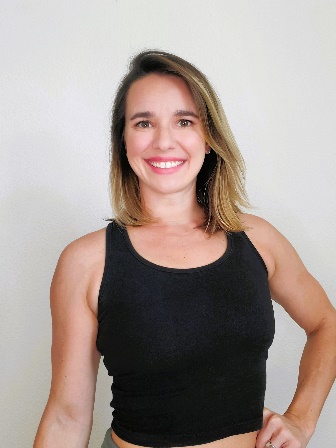
300 Hours in 365 Days
I chose 365 days because I knew it would be a challenge but also attainable. To reach this goal I would have to work on my course at least a couple hours a week. I left no room to fall out of my routine. While completing my 200-hour yoga teacher training with Drishti Beats I got complacent. I allowed myself to procrastinate. Because of that it took me longer than I wanted to finish. This time around I already had a routine in place. I knew how to study and prep, and I was comfortable with my filming skills. Knowing this, I challenged myself to finish the 300hr training in the same amount of time it took me to complete my 200hr, 365 days. I know what you’re thinking, a whole year? Why not get it done in a month or two like so many others. Well, this decision was how I landed on Drishti Beats Yoga Teacher Training in the first place. An online, work at your own pace, course.
Truly Immersing Myself
I have young children and am mostly a stay-at-home mom. I am not in a place where I can drop everything and travel to an exotic location for a month to learn yoga. I have responsibilities. I have no doubt that my husband, John, would have supported me in that decision but I personally couldn’t bring myself to leave him in that type of situation. I also could have found a local teacher willing to provide a live course with faster outcomes. But for me it wasn’t about finishing as fast as possible. This training has been about truly immersing myself in the material and applying it in real time to my own personal life as well as to the yoga classes I teach weekly. Taking an online course has allowed me to go at my own pace. To take breaks and absorbed the knowledge I learned. At times I would sit down to study and in just the first video I would find myself diving down rabbit holes on Google because I wanted to learn more about that topic. A live class wouldn’t give me that opportunity.
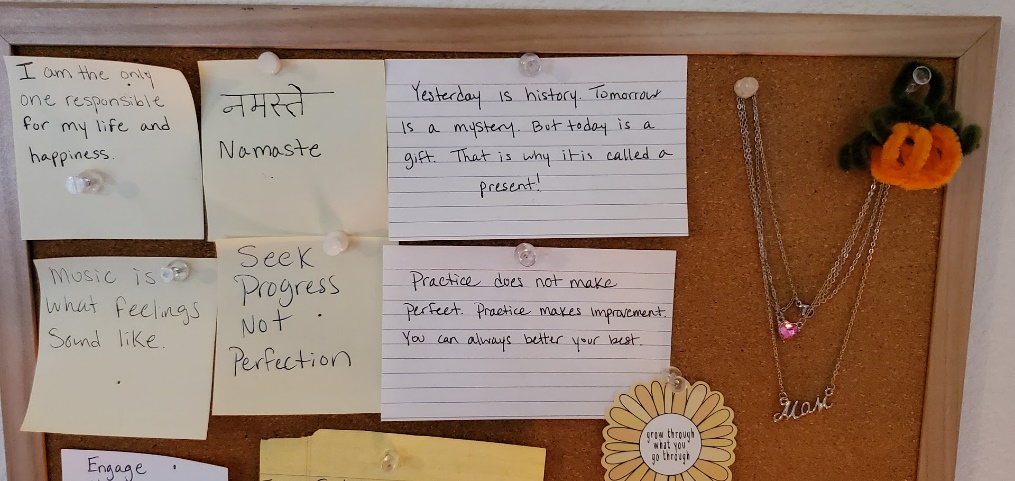
Music is What Feelings Sound Like
It wasn’t just the online delivery, the perfect price, or the work at your own pace that drew me to Drishti Beats. It was the music! I love music. I have music playing just about every moment of my day. I have a group fitness background where music is everything in a fitness class. It drives you, entertains you, and brings everyone together. I want my yoga to have this same atmosphere. Music can make all the difference in taking a yoga class from just OK to Great! Lori said once, “music is what feelings sound like.” I couldn’t agree with this more! I know, I know, seems too good to be true. You’re probably thinking that I felt lonely through this online journey. That I probably missed the comradery of a large in person group with memorable moments shared along the way. On the contrary.
Gather ‘round (Online)
With the weekly calls and through social media, it is easy to feel like my “classmates” were all right there with me. How cool that I get to chat with other individuals from all over the world who have the same passions, goals, and interests as me. The weekly Gather ‘round calls are a great way to share information, trade ideas, and hear other’s thoughts on topics we are all learning together. It is fascinating to hear the same sequence taught one after another by different students and learn something new from each one. One person can say something just a little differently and it can resonate so strongly with you. What I love about Drishti Beats is that even though you have graduated they still invite you to the weekly calls. It makes me feel like it isn’t just a learning environment but a space for friendships and community. They open the space, so we never stop learning! Lori and Jeremy felt like such good friends after only a few calls. And with the one-on-one check-in calls, you get an opportunity to be truly open and feel heard. Never have I left a call with doubt or hard feelings. Only encouragement and motivation.
Healthier Mind, Calmer Emotions
It wasn’t all fun and games though. My biggest challenge throughout this training is also the main reason I pursued my 300-hour training in the first place. Not for the title on my resume, but for the knowledge and practice of storytelling. I had the physical practice down. I know how to teach. But I was lacking in my delivery. I want my students to walk out of my yoga classes stronger, more flexible, and healthier. But I also want them to walk away with a healthier mind, calmer emotions, and with tools to live a more fulfilling lifestyle, inside and out. This has taken me out of my comfort zone. I have learned how to research class themes, mudras, dharmas, and mantras. I have a small library of ideas that I can now pull from if I am lacking ideas for my next class. I also feel more confident in how I cue these themes. I have a better understanding of how I can teach these big ideas and have them resonate with my students. I now teach the full package. Mind, body, and spirit.
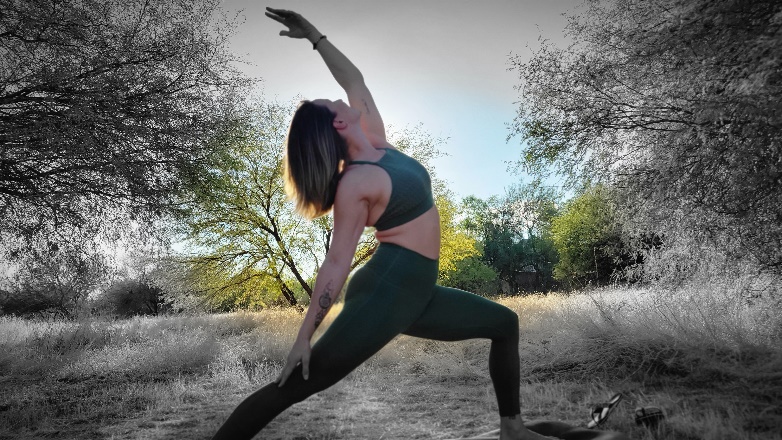
Meditation
Storytelling was the hurdle I was expecting. What I didn’t see coming was my own personal struggles with meditation. Starting every day with 30 minutes of meditation was easier said than done! Over the months in this training, I’ve come to accept that I am not a sit still meditator. I need movement and I prefer my eyes open. I try to start every day walking my dogs. It allows me the time to reflect on my previous day, my emotions, or whatever else I may be working through. It has been a game changer in how I manage my feelings. This struggle turned success is just one of the areas I have managed to overcome.
The Freedom to Move
Teaching off the mat was something I used to do only when it was mandatory. One year later, I feel confident in not only stepping off my mat for a small portion of the class but for entire sequences. I’ve built the confidence and ability to cue and coach without my body and it has given me so much freedom to dive deeper into my storytelling. I had to push my fear aside and just do it. It almost feels natural now to gracefully step off and, on my mat, to move into poses, then out again seamlessly. It leaves my hands free to help my students with hands-on assistance. It has leveled up my teaching. These new tactics aren’t just limited to Vinyasa Yoga anymore either.
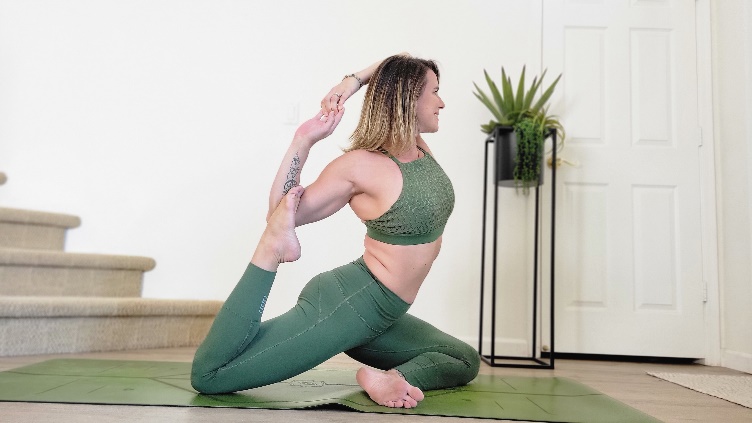
Yoga Workshops
Some things I didn’t expect to learn but am thankful I did are the Yin Yoga and Restorative Yoga workshops. Yin Yoga is the routine I was missing from my life that I didn’t know I needed. It is such a popular class around here (Phoenix, Arizona), but I’ve always thought of it as too slow, too easy. But I was wrong. It took just one class for me to get hooked. Now I practice it at least once a week and hope to teach it very soon. And hello storytelling! There is so much room to teach and expand on topics while you get an amazing stretch. Speaking of a practice being slow, I can’t use sick, sore, or tired as an excuse to not get practice in anymore. Restorative yoga is here to save the day. With the help of props, anything is attainable. These slow moving, almost meditative, poses were a great way for me to continue my “almost” still meditation practices without getting discouraged.
Different Yoga Styles
While we’re on the topic of different yoga styles, have you ever heard of Terpsichore yoga? It was the hardest hour of yoga I have ever taught but also the most fun. Boy did this take me out of my comfort zone and test my endurance. I do not think I would have ever volunteered to learn this style of rhythmic yoga without Drishti Beats.
Sanskrit
Among all these different styles of yoga, my Sanskrit knowledge was developing without really trying. Sanskrit a second language? Yup! Just about. I feel like when it comes to yoga now, I think more in the Sanskrit names than the English translations. I never thought that would be the case, but here we are. I feel it brings in a sense of unity within the yoga community. Regardless of what your native language is or what one person calls a pose versus another, Sanskrit is consistent. It is easy to follow once you understand it. I really enjoyed that this training dove deeper into the history of the language and its pronunciation. Even the occasional written word as well.
Now I know you’re going to ask, “if I could go back and start the training over, would I choose or do anything different?” Absolutely not! Knowing what I know now, I think that every part of this training happened the way that it was supposed to. It all fit into my life so perfectly. I am a better mother, wife, teacher, and overall person than when I started. This journey has been life changing on so many levels, far more than I anticipated, and I wouldn’t have it any other way.
So, if you’re on the hunt to become a better yoga teacher or maybe just a better yoga participant, heck, just a better human being then please do yourself a favor and enroll in Drishti Beats 300h Advanced Yoga Training.

Perfectionism Is The Enemy of Progress | Lori Lowell | Drishti Beats Yoga
YOGA TEACHER TRAINING
Last updated: December 17, 2023
 By Lori Lowell, Drishti Beats mentor, co-founder and fitness visionary, is the 2015 Julie Main Woman Leader Award recipient. She often interviews for Ask An Expert in Club Solutions Magazine, regularly appears on Club Industry, and is an accomplished E-RYT 500.
By Lori Lowell, Drishti Beats mentor, co-founder and fitness visionary, is the 2015 Julie Main Woman Leader Award recipient. She often interviews for Ask An Expert in Club Solutions Magazine, regularly appears on Club Industry, and is an accomplished E-RYT 500.
So let’s get right to it. I am going to invite you to drop the thought of being perfect, in any aspect of your life. Mainly because I want you to complete your yoga teacher training and if you are wrapped up in being perfect it will take you longer than you would like.
Being in yoga is not about being perfect. We, Drishti Beats, truly believe that you are absolutely perfectly imperfect and everything you do is about your authenticity and your organic self. What makes a masterful yoga teacher and even more importantly, you, as a masterful person, is not being perfect and never making a mistake. If you live life in the space of seeking perfectionism it will interrupt your progress.
So let’s look at this dirty 13 letter word – Perfectionism.
 Lori Lowell, Drishti Beats mentor, co-founder and fitness visionary, is the 2015 Julie Main Woman Leader Award recipient. She often interviews for Ask An Expert in Club Solutions Magazine, regularly appears on Club Industry, and is an accomplished E-RYT 500.
Lori Lowell, Drishti Beats mentor, co-founder and fitness visionary, is the 2015 Julie Main Woman Leader Award recipient. She often interviews for Ask An Expert in Club Solutions Magazine, regularly appears on Club Industry, and is an accomplished E-RYT 500.
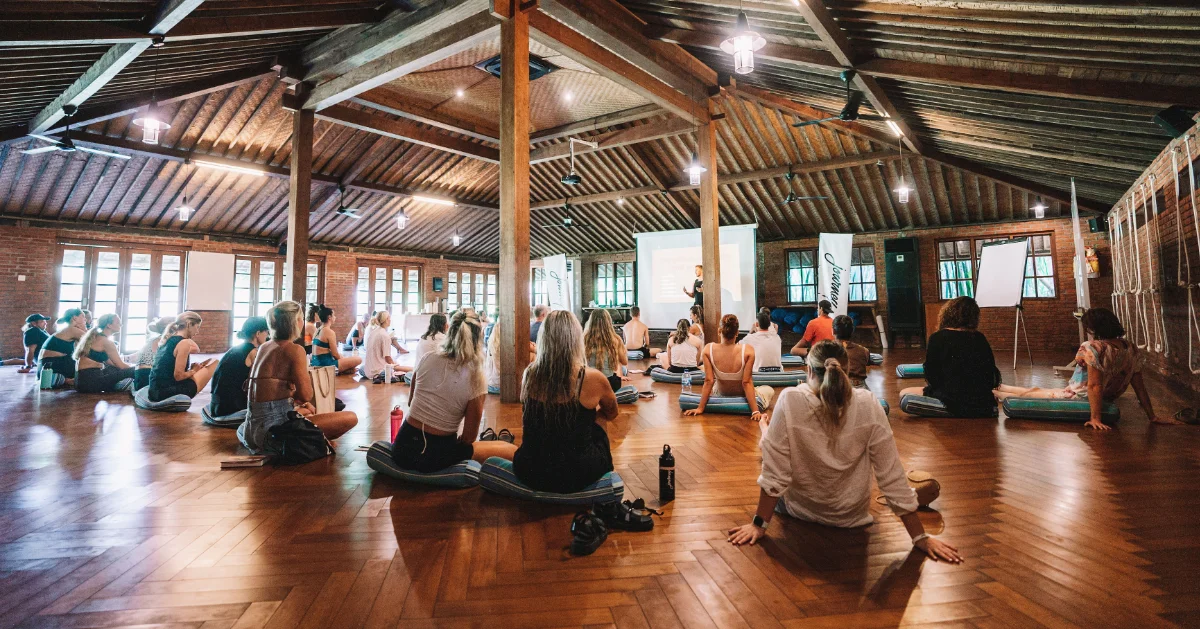
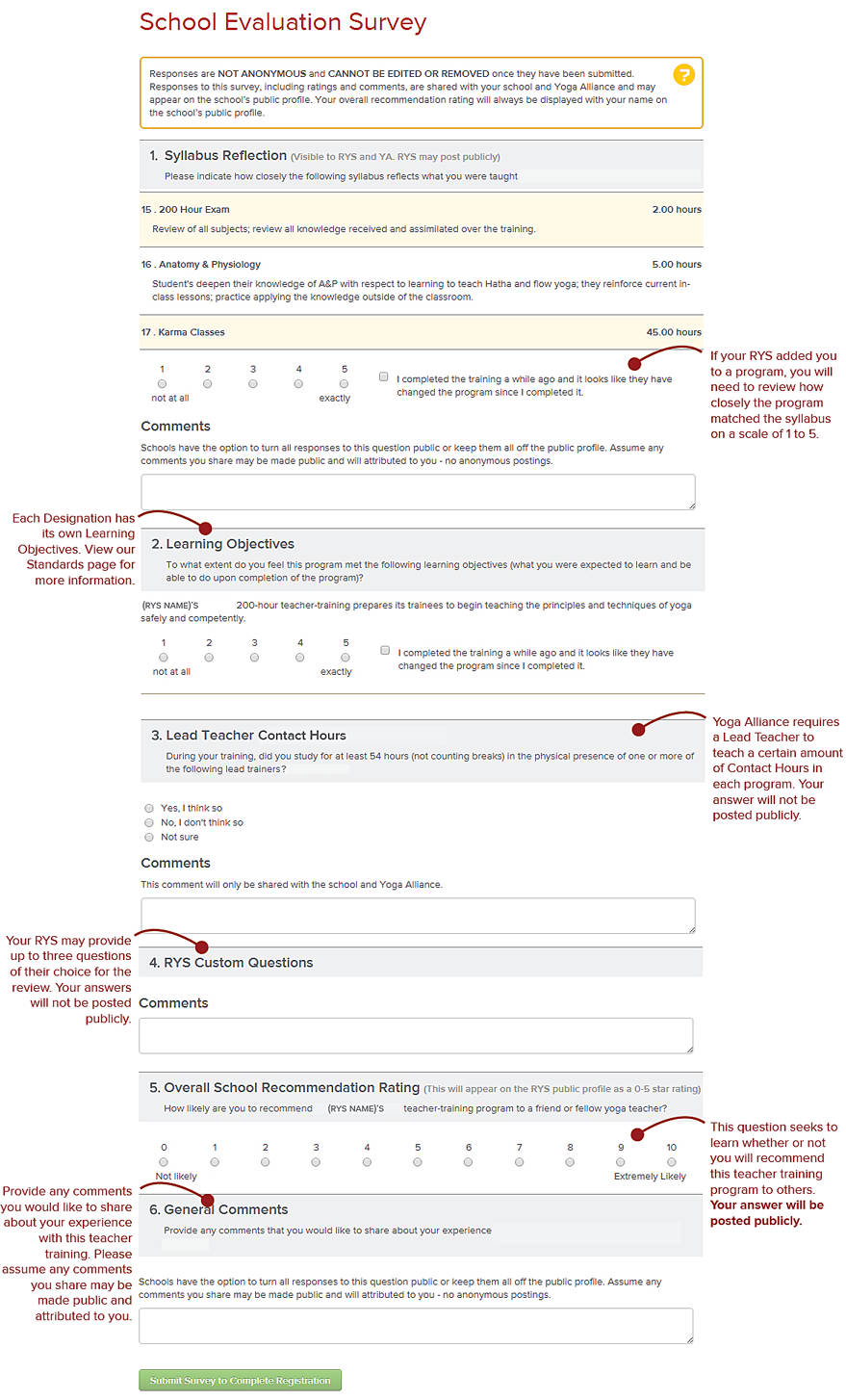
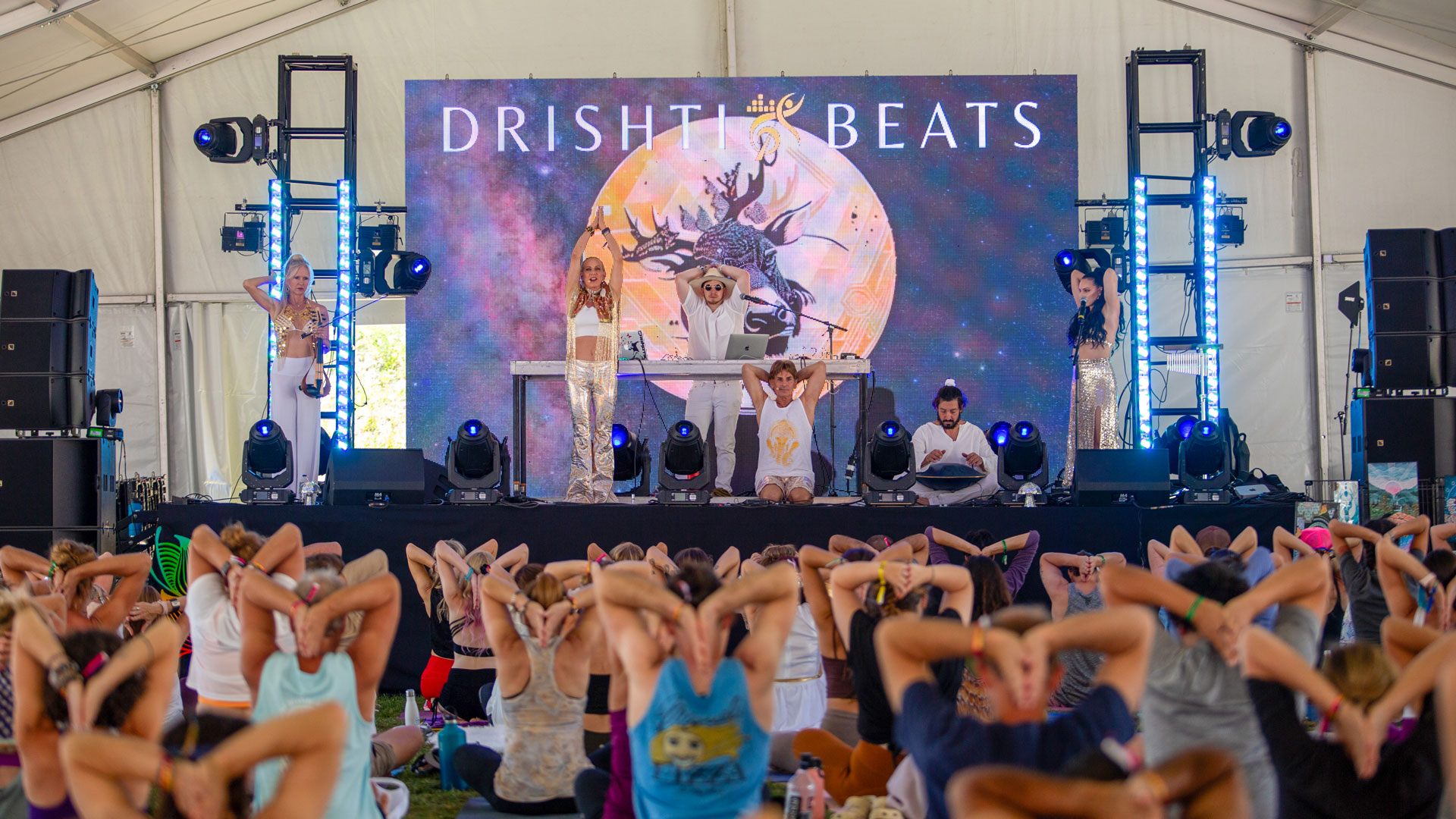
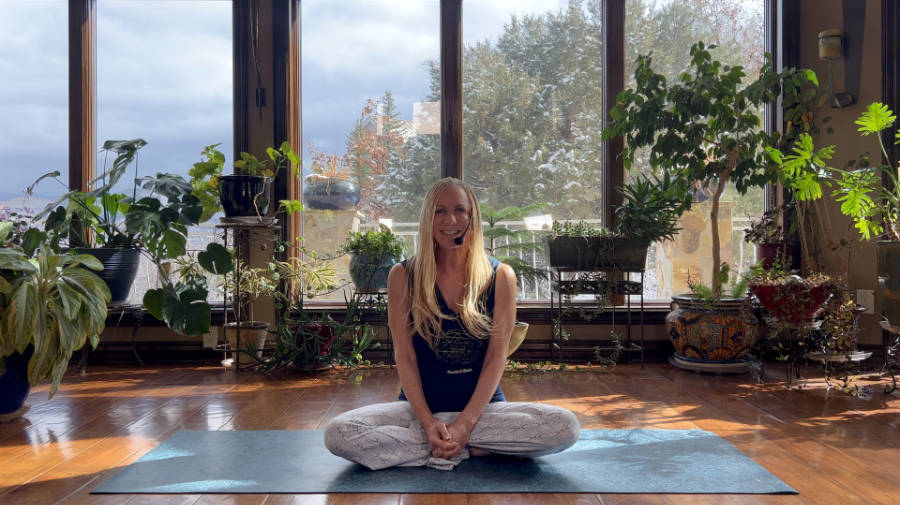
Source: School Profile | Yoga Alliance